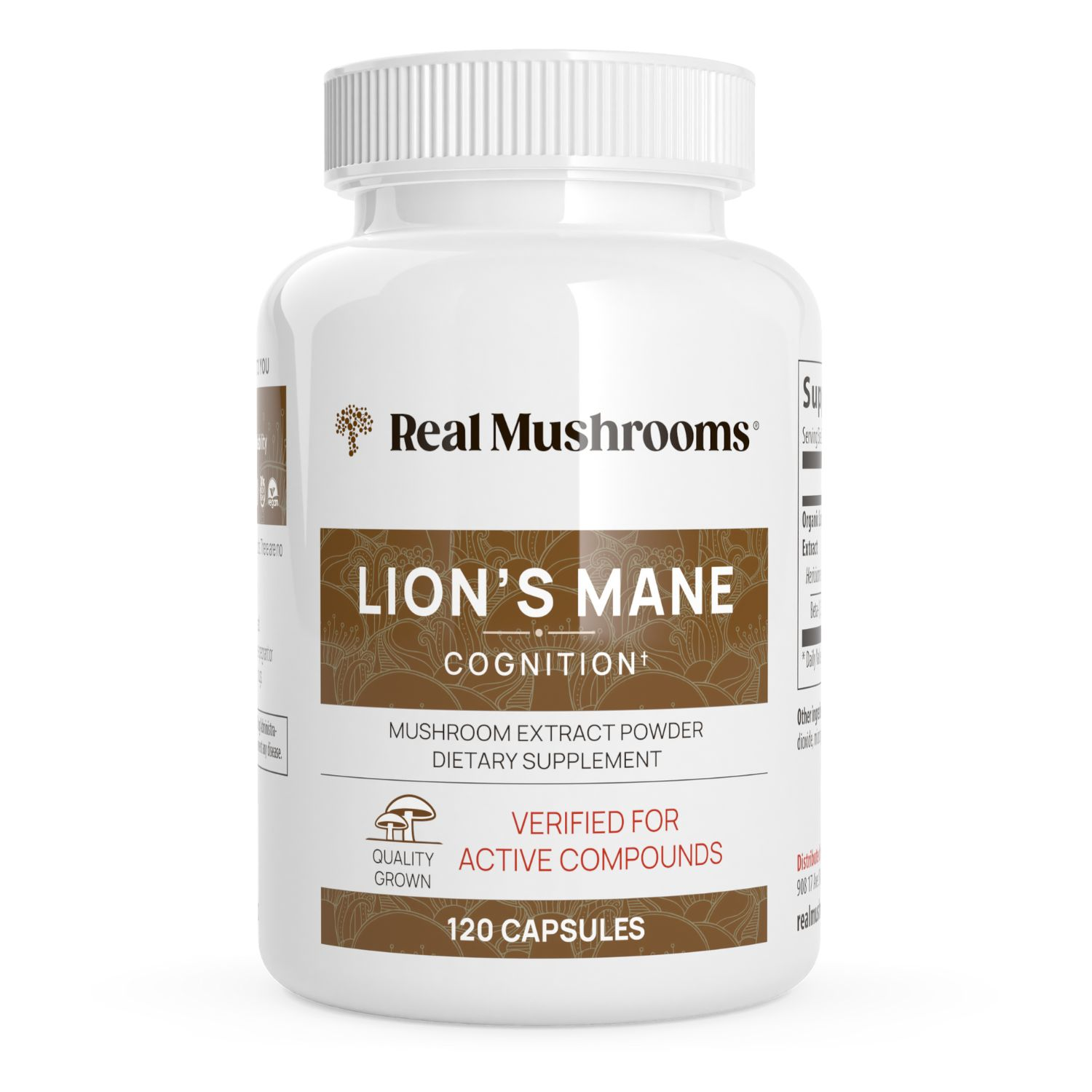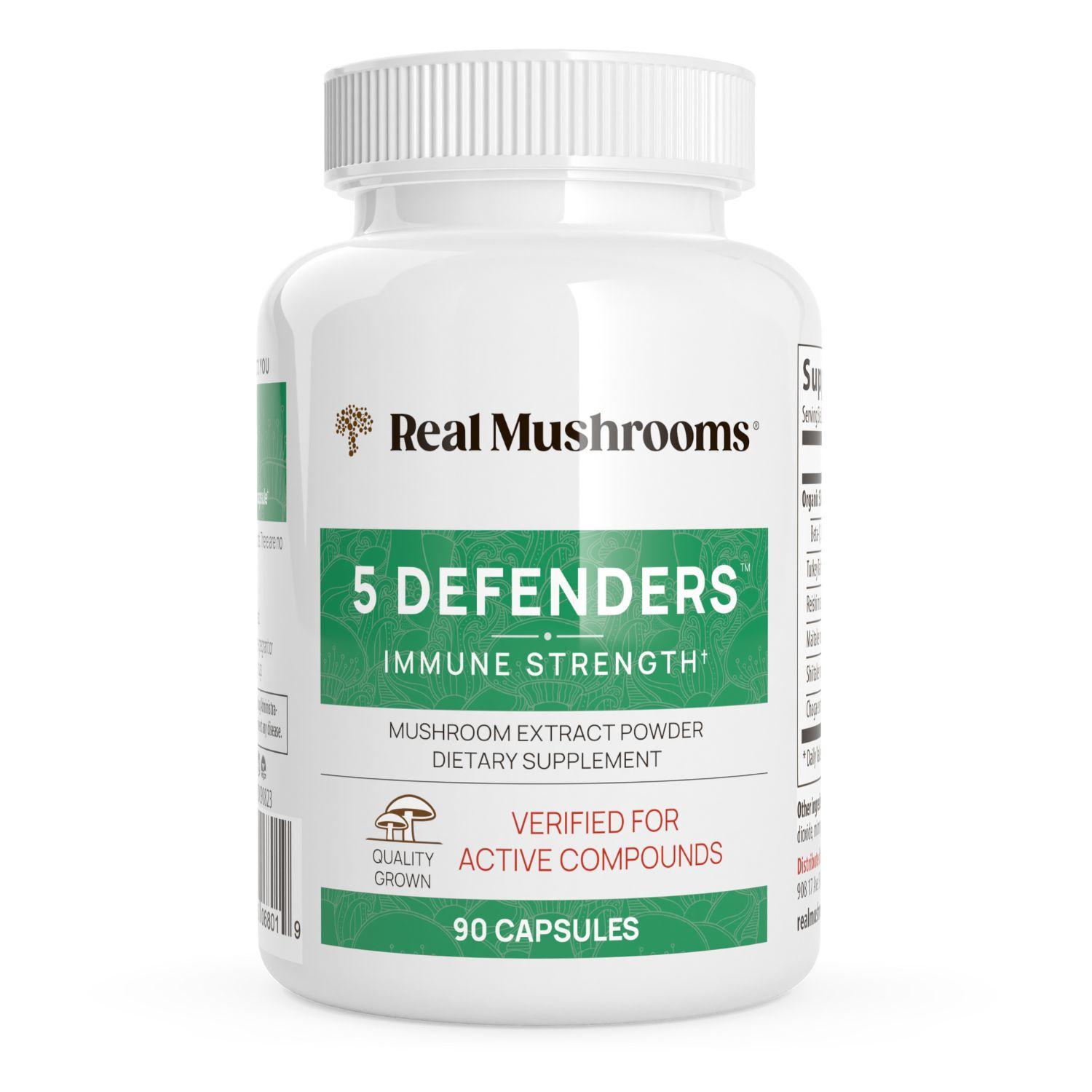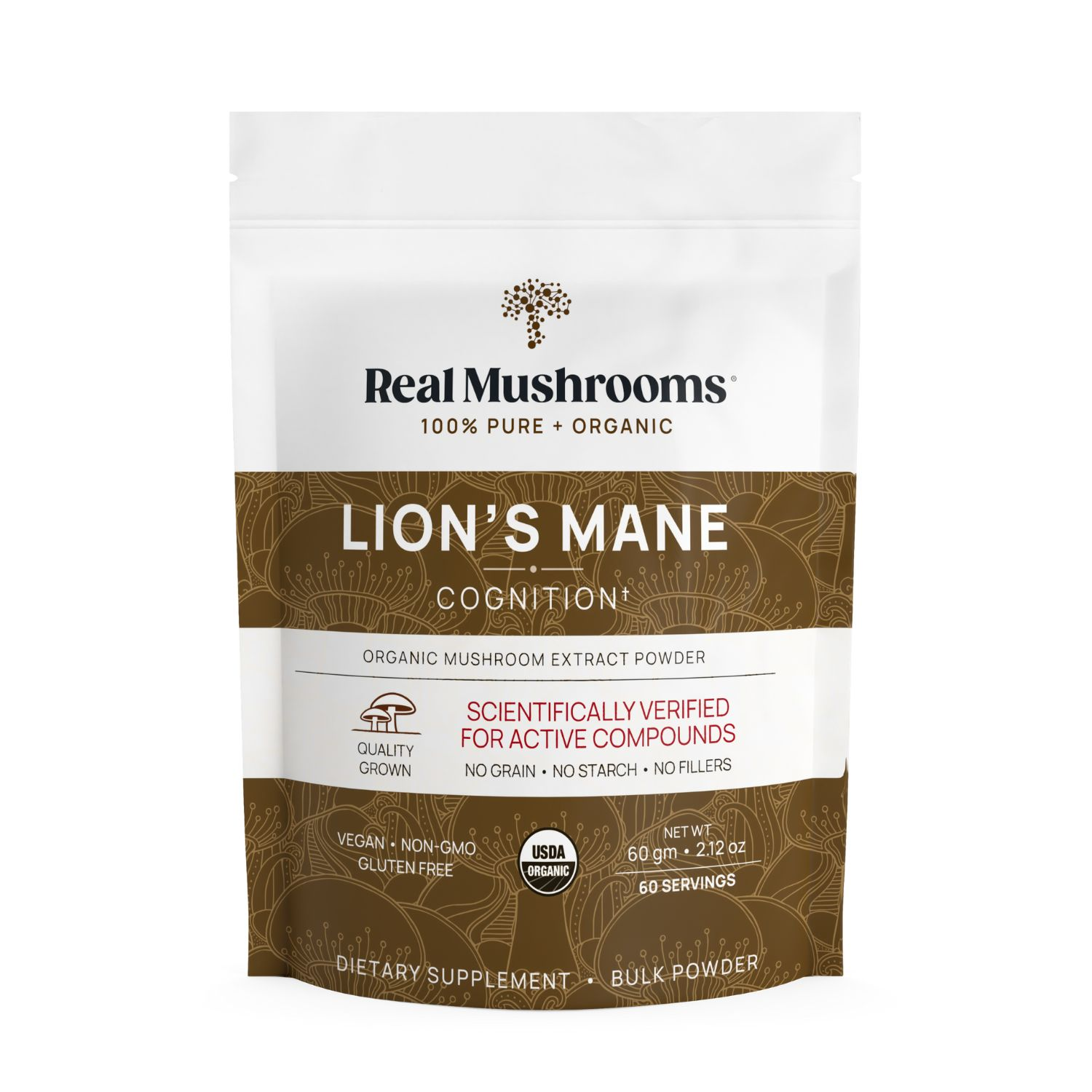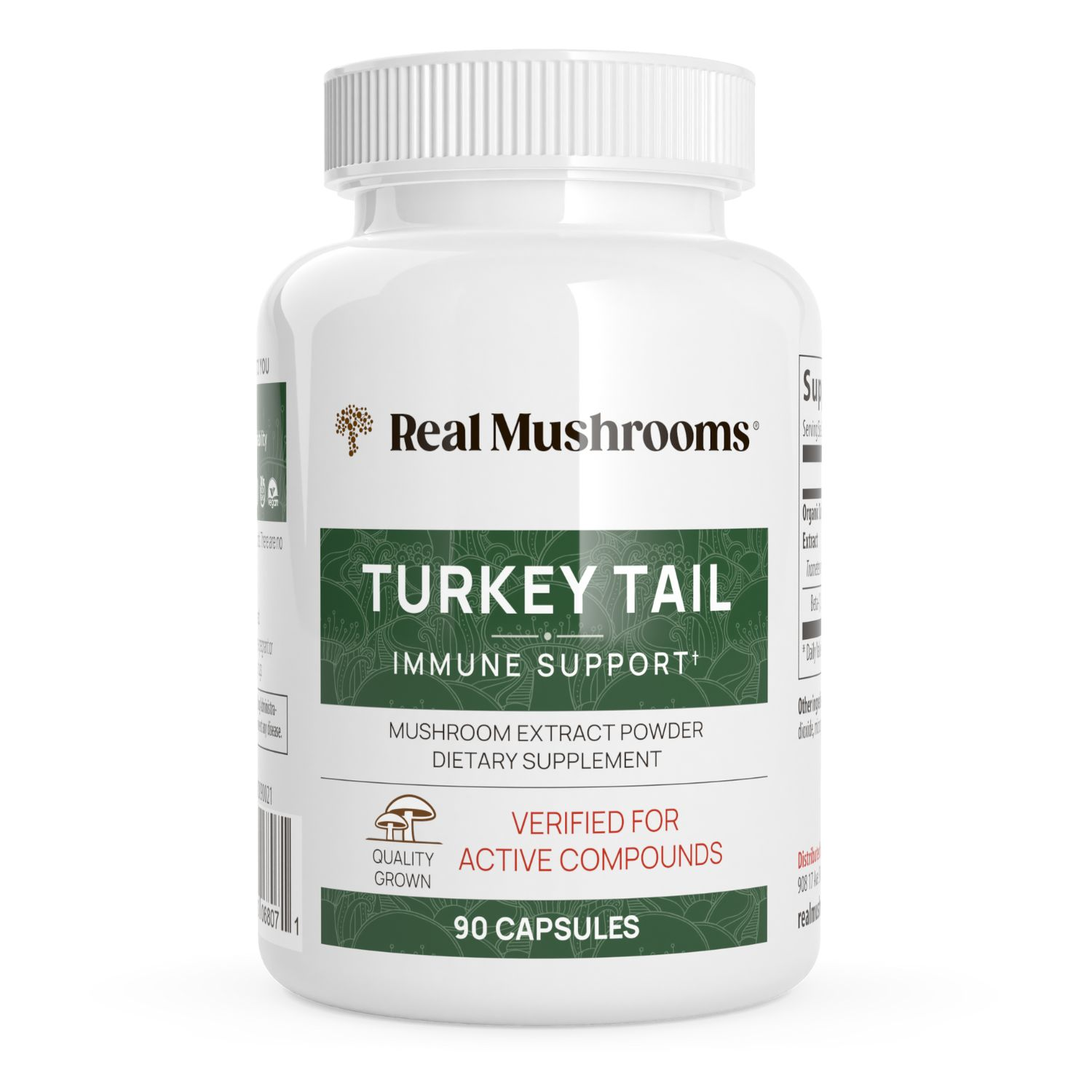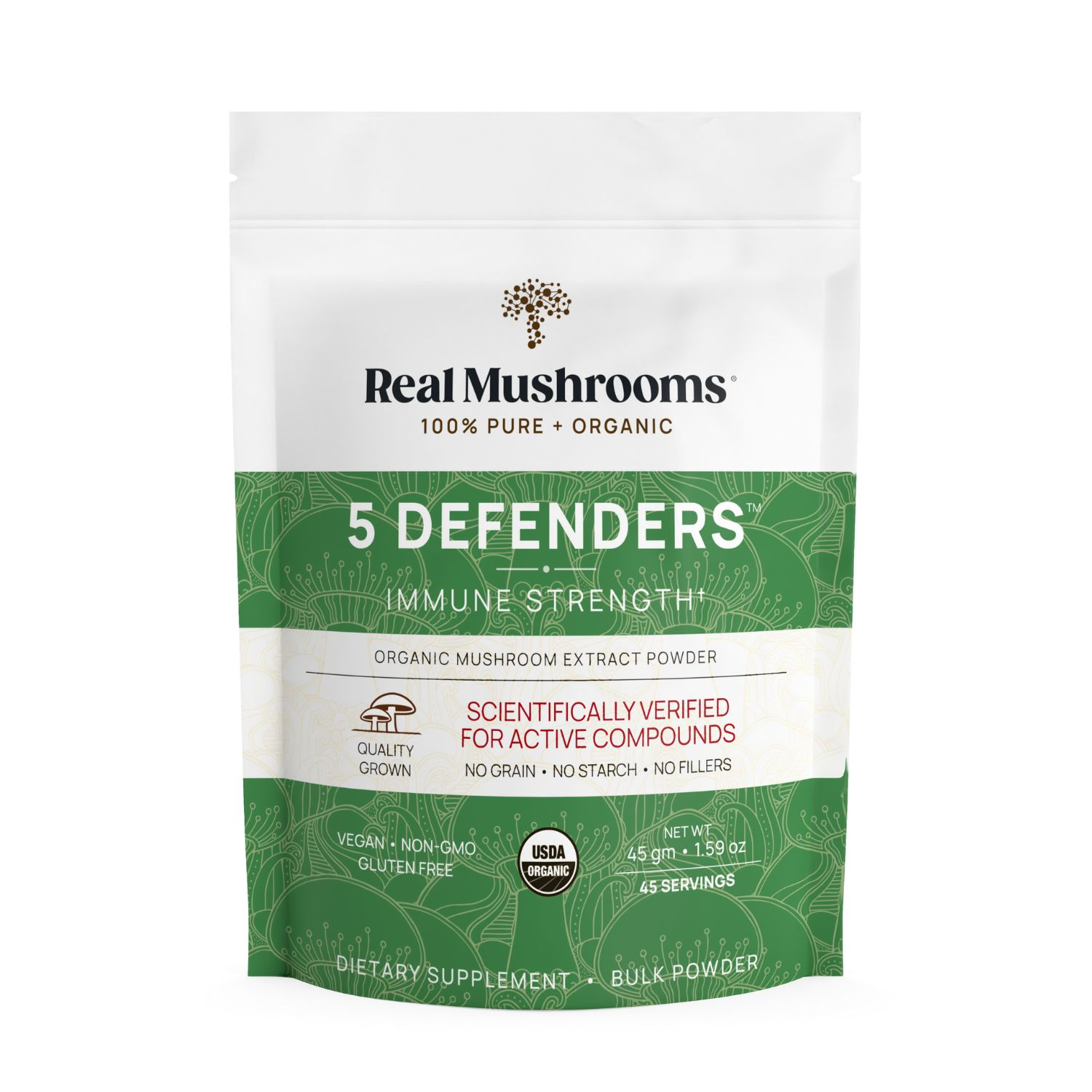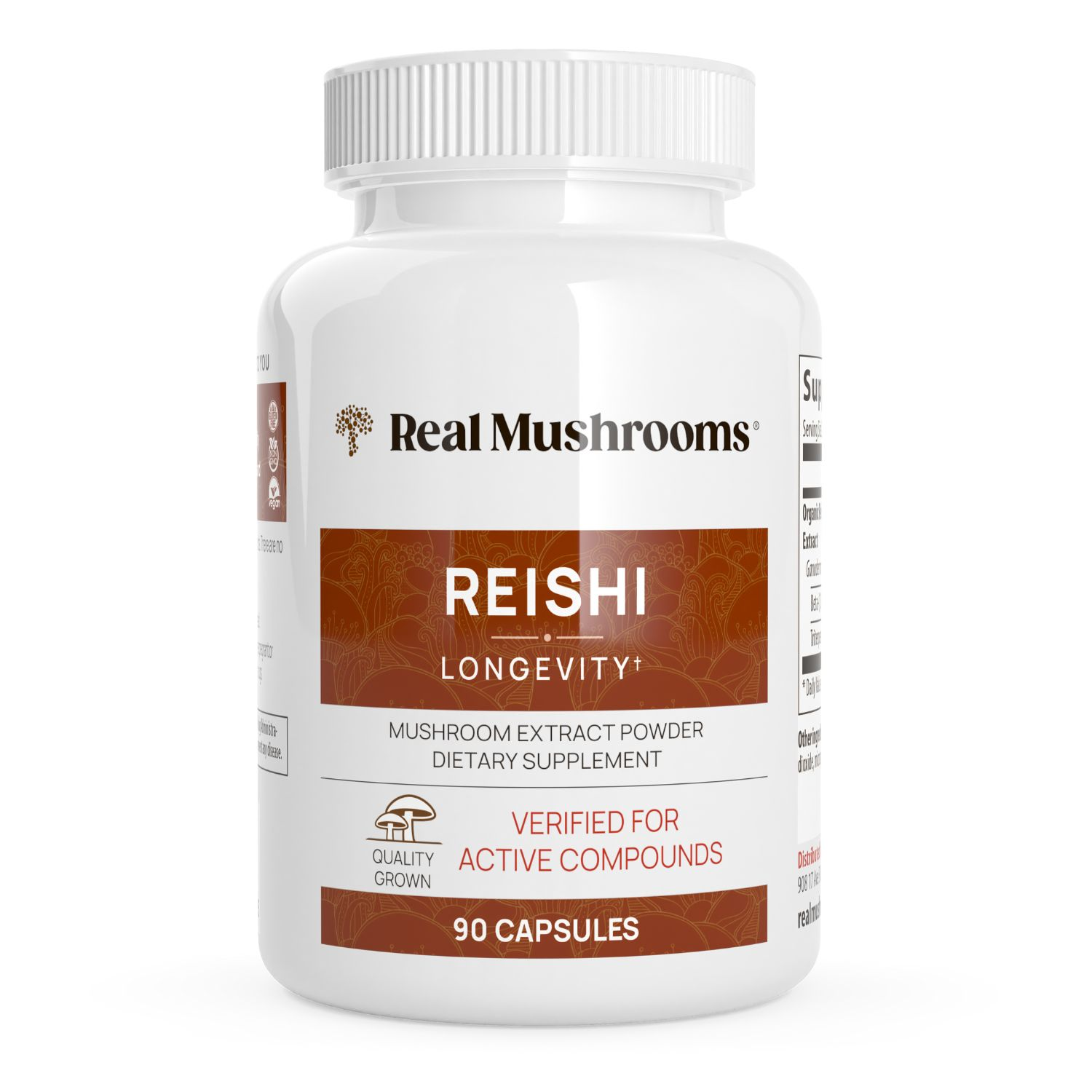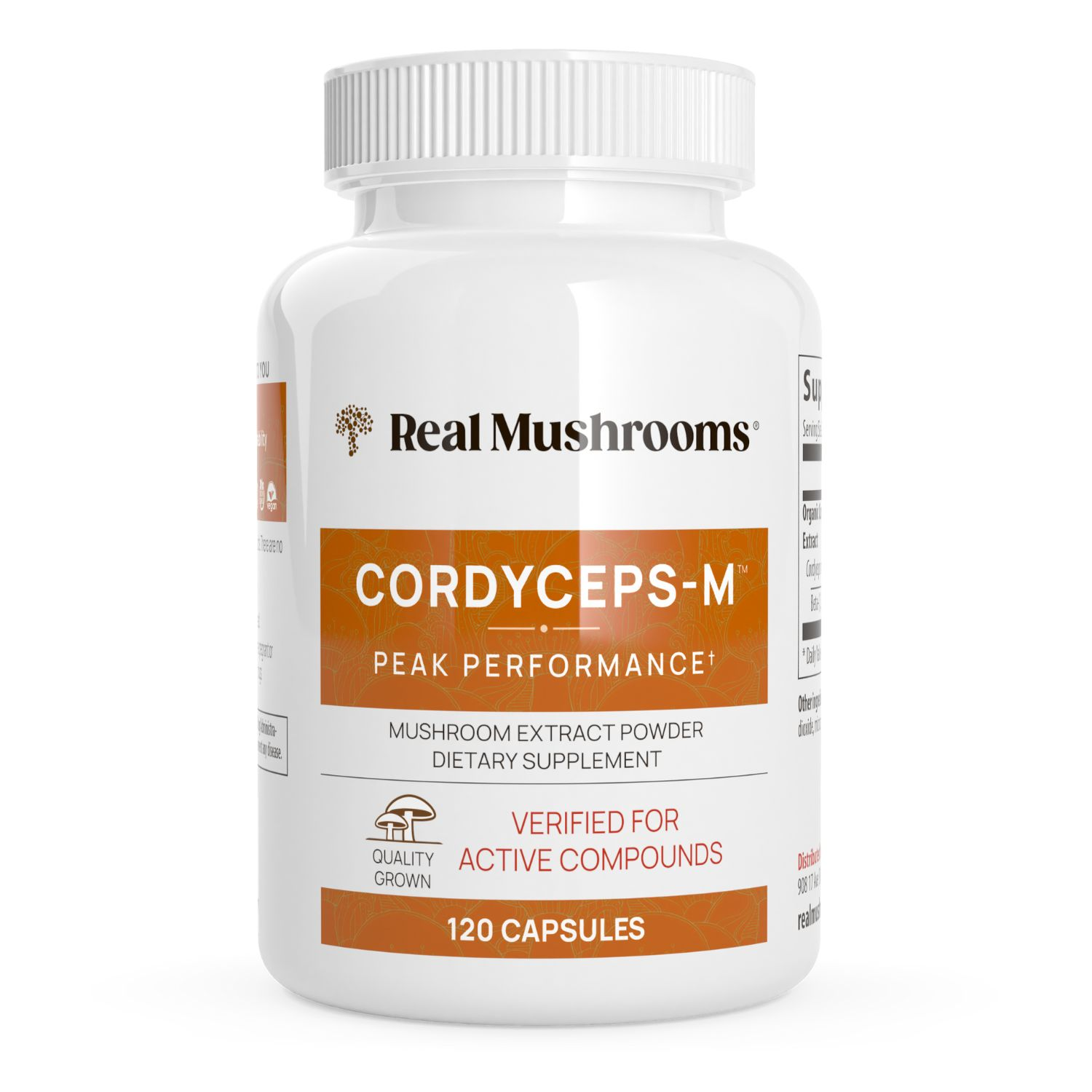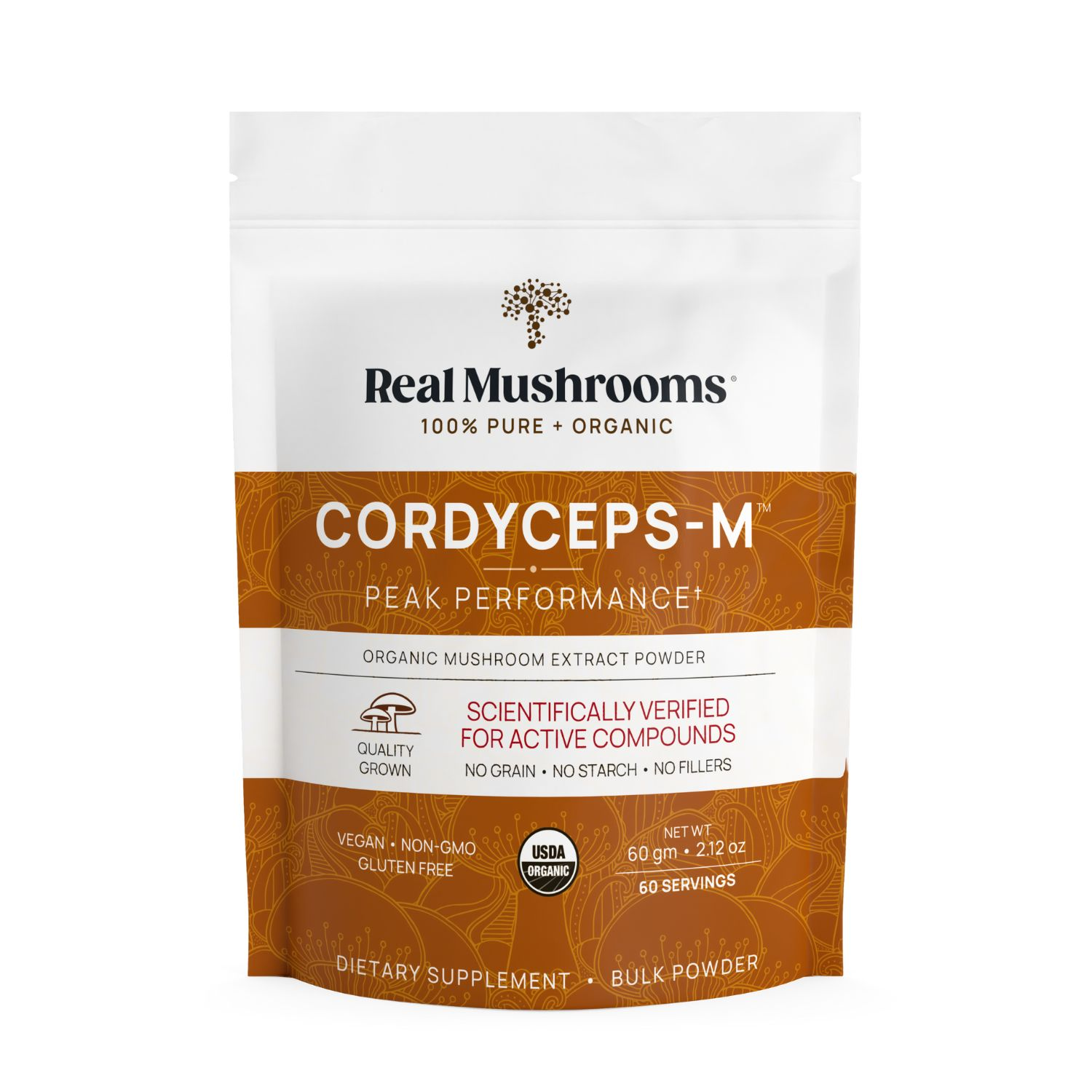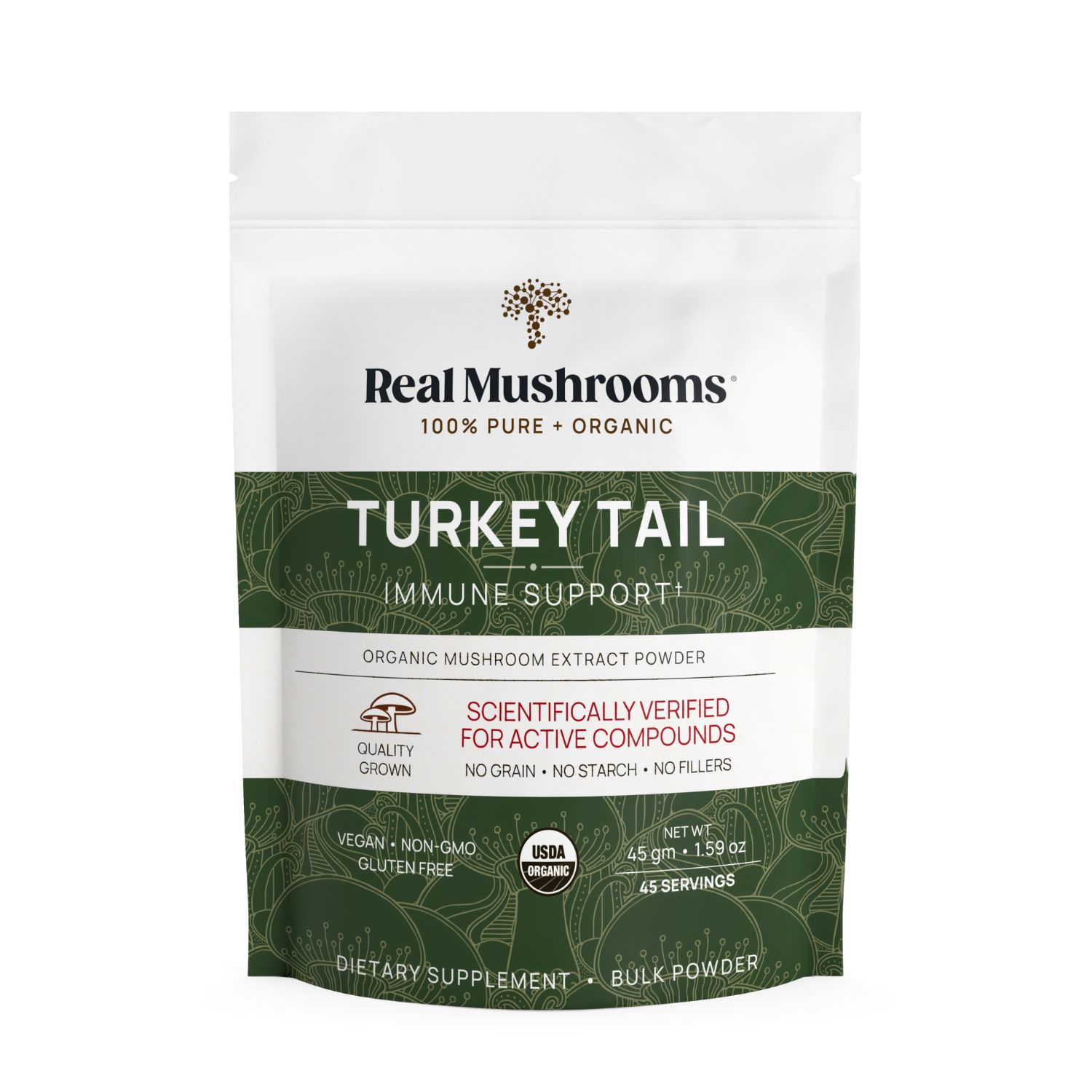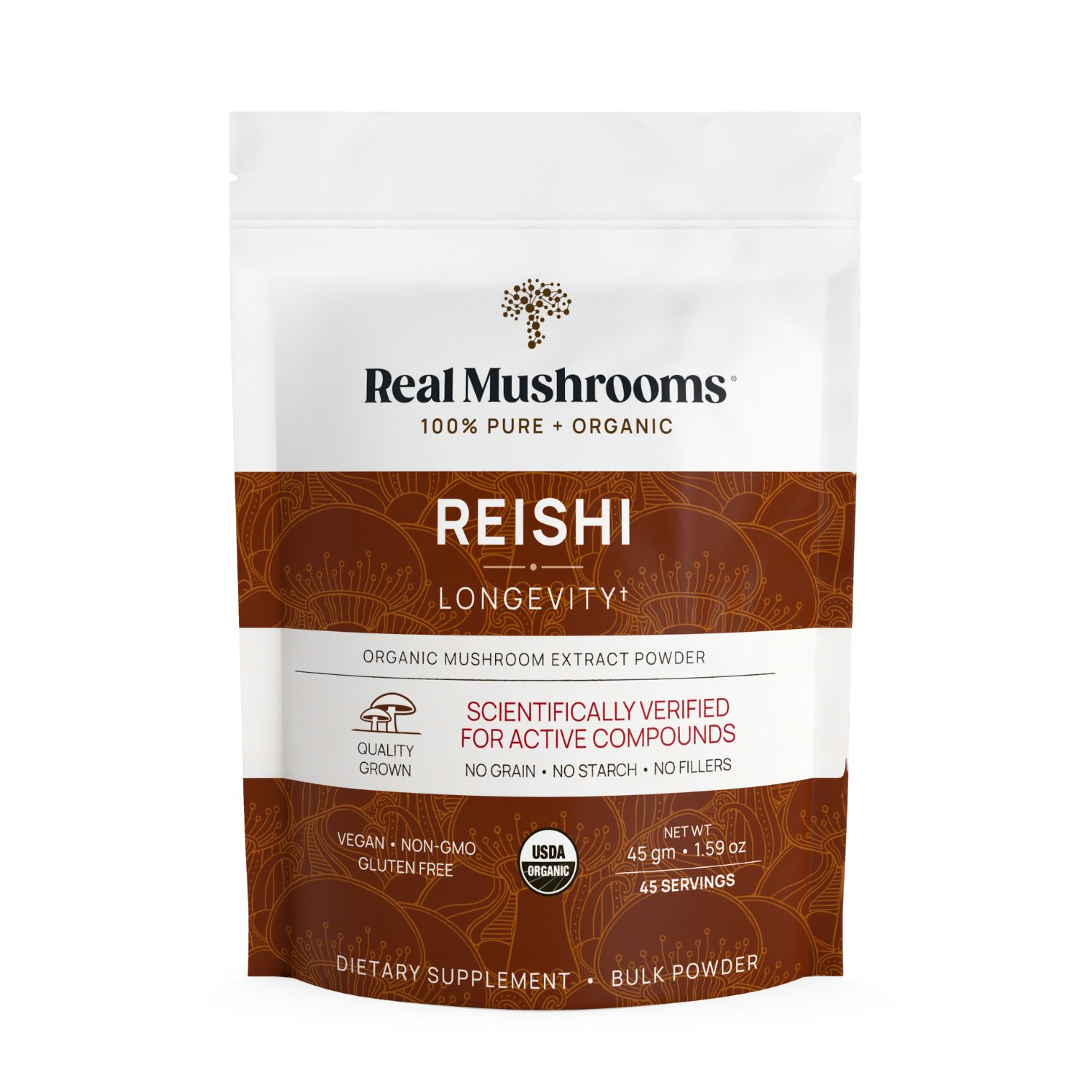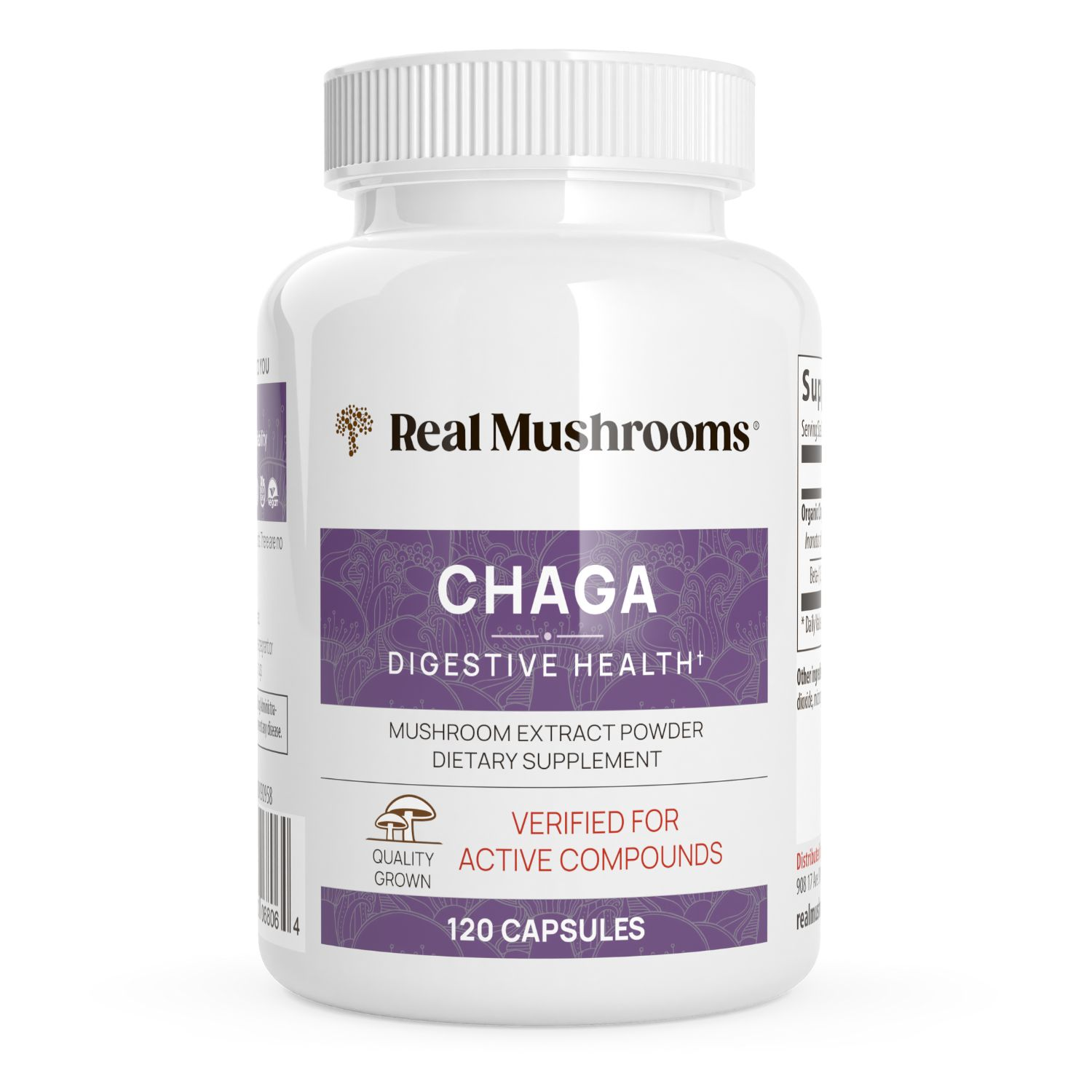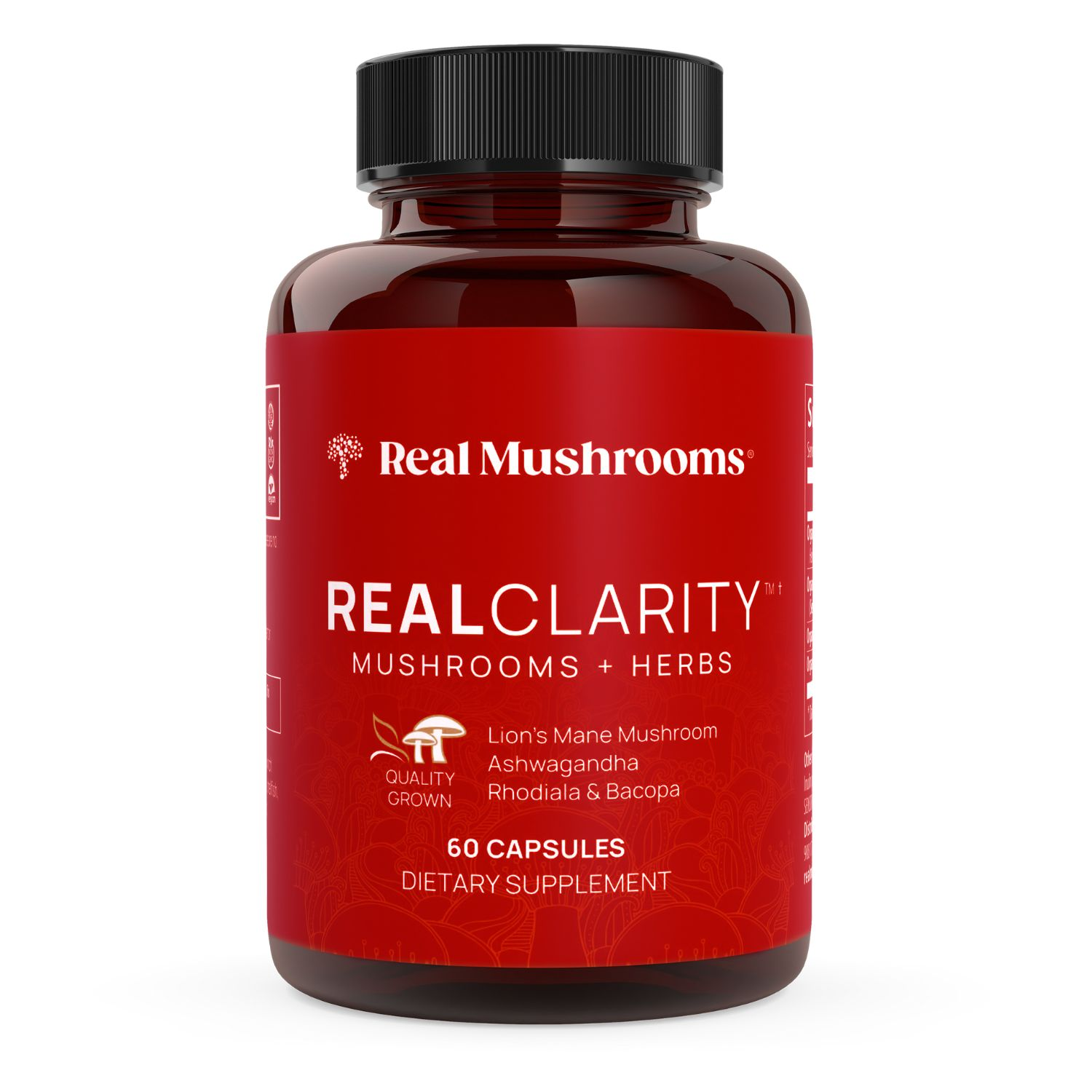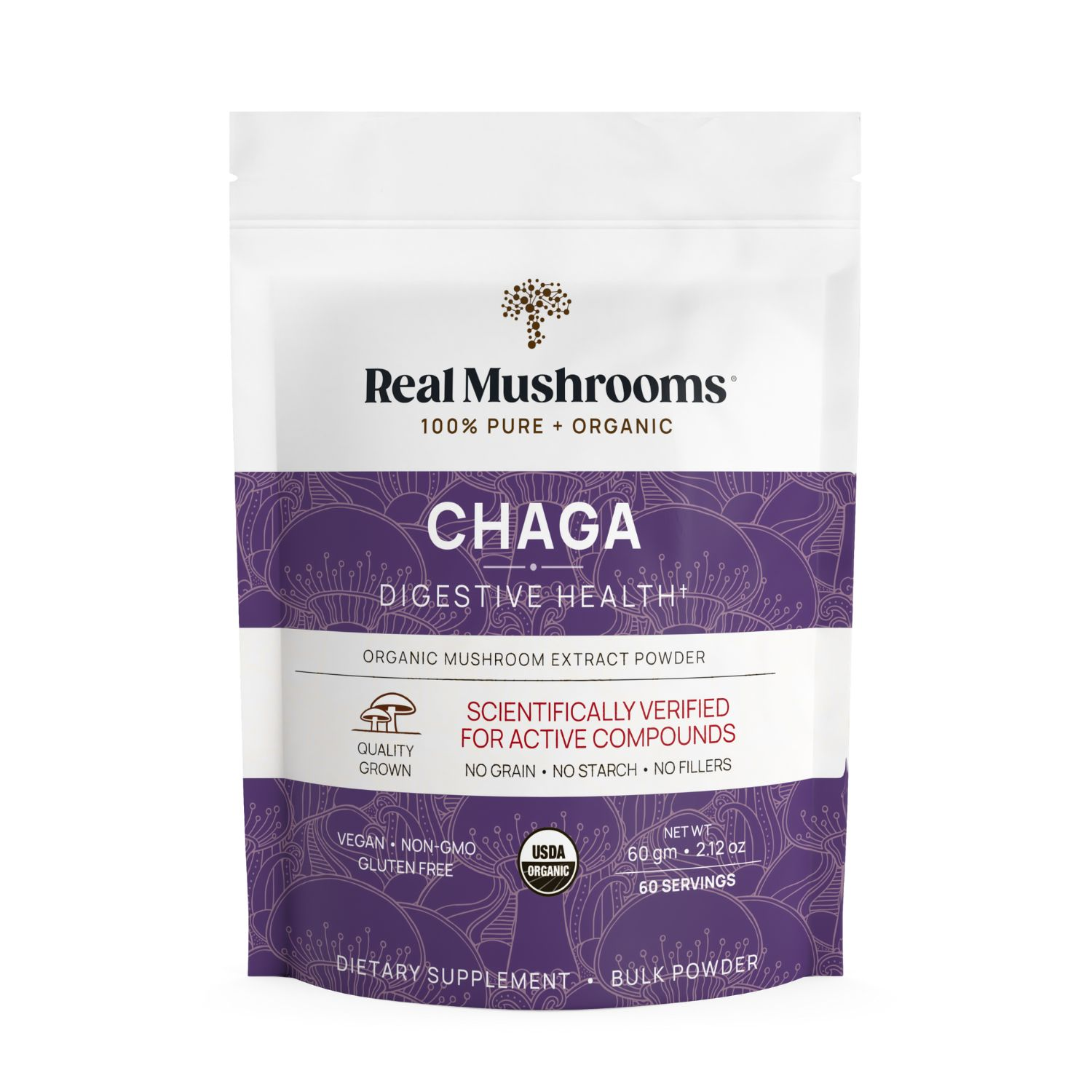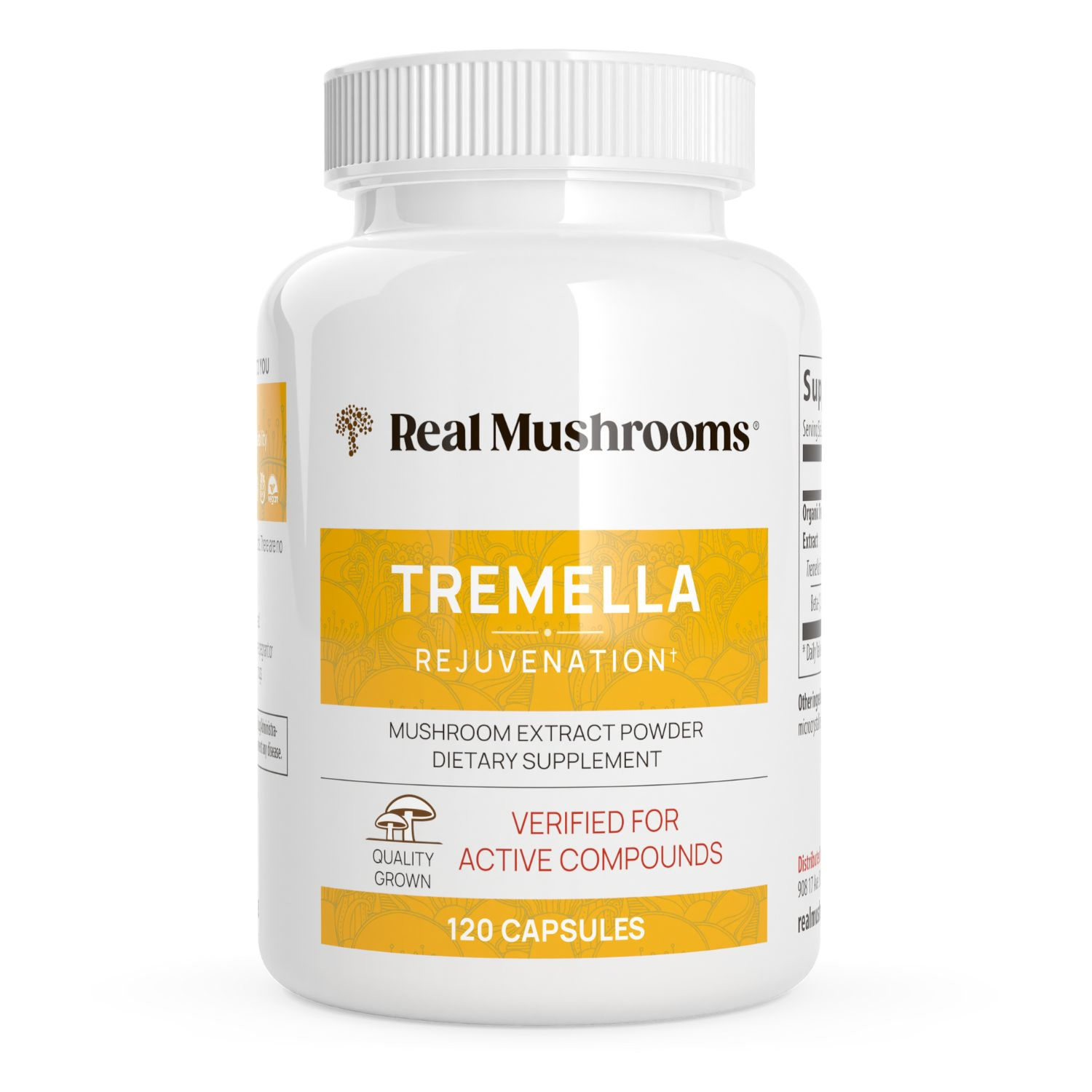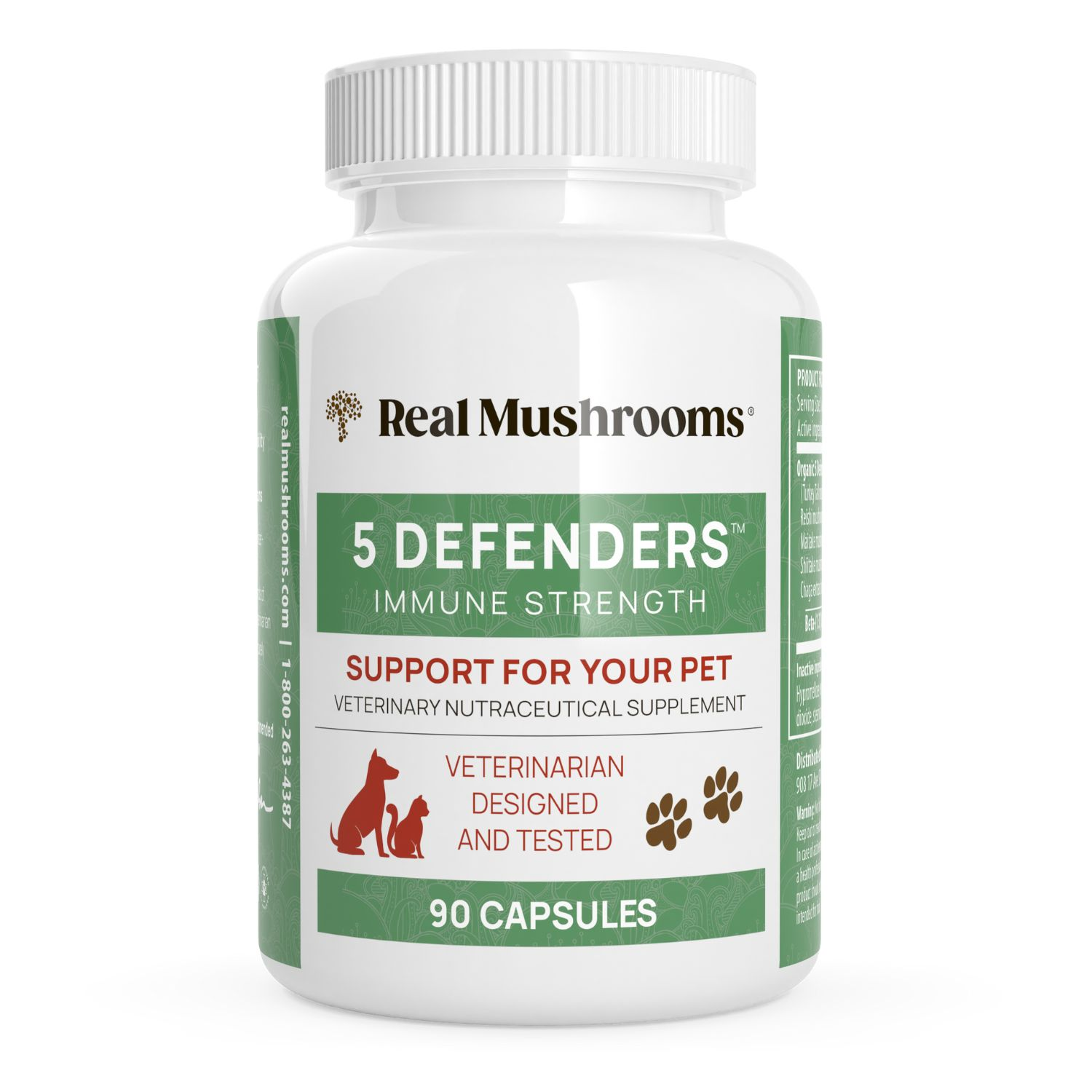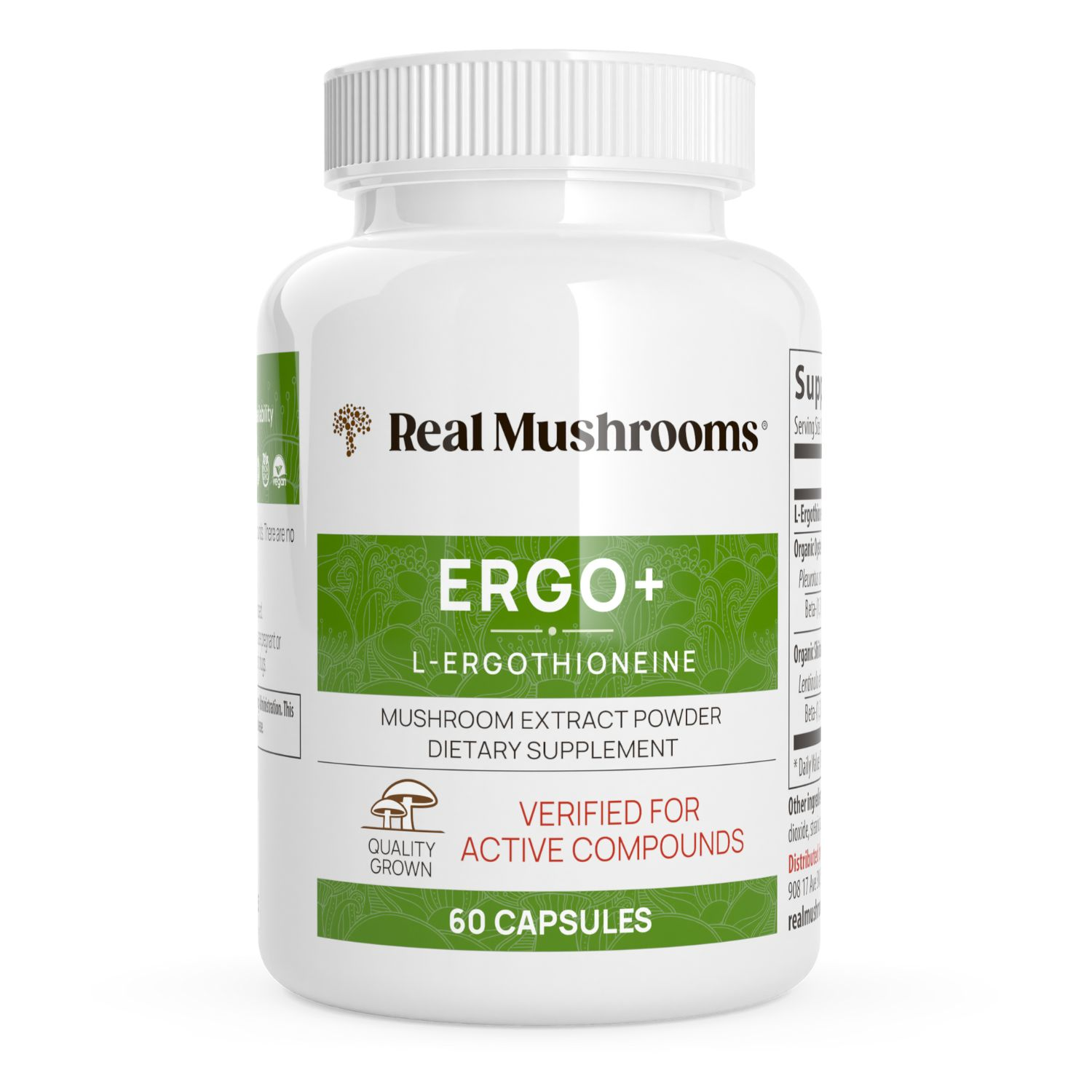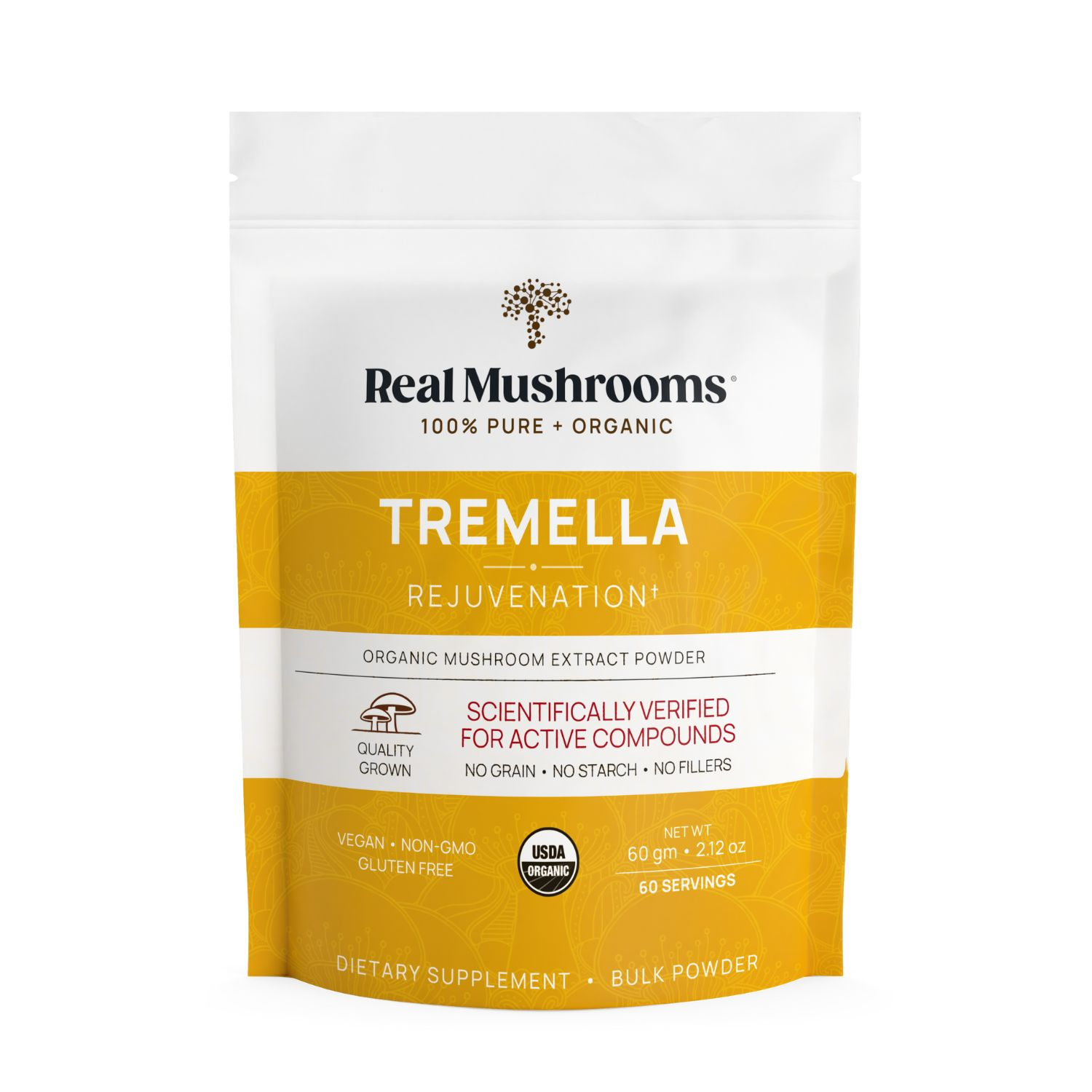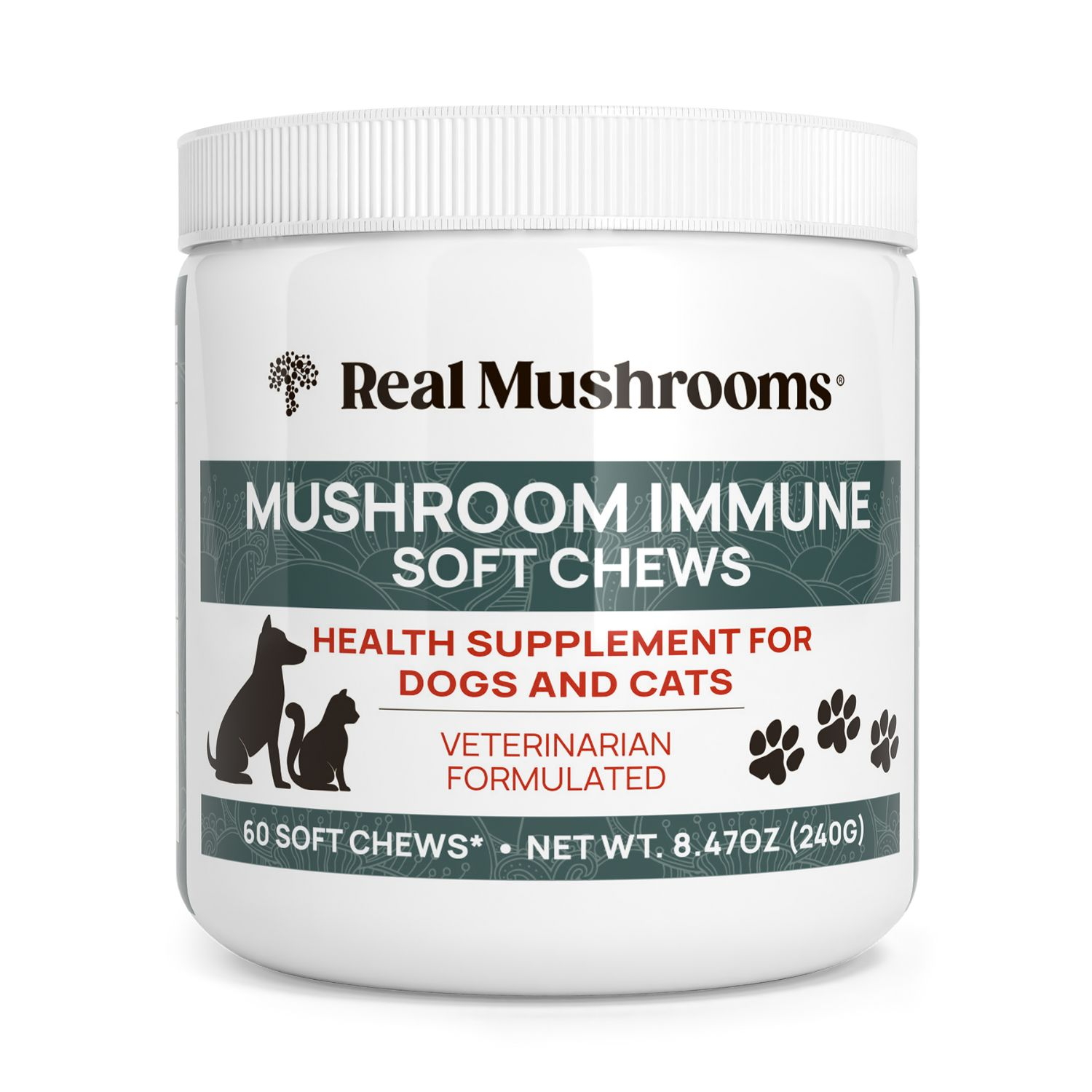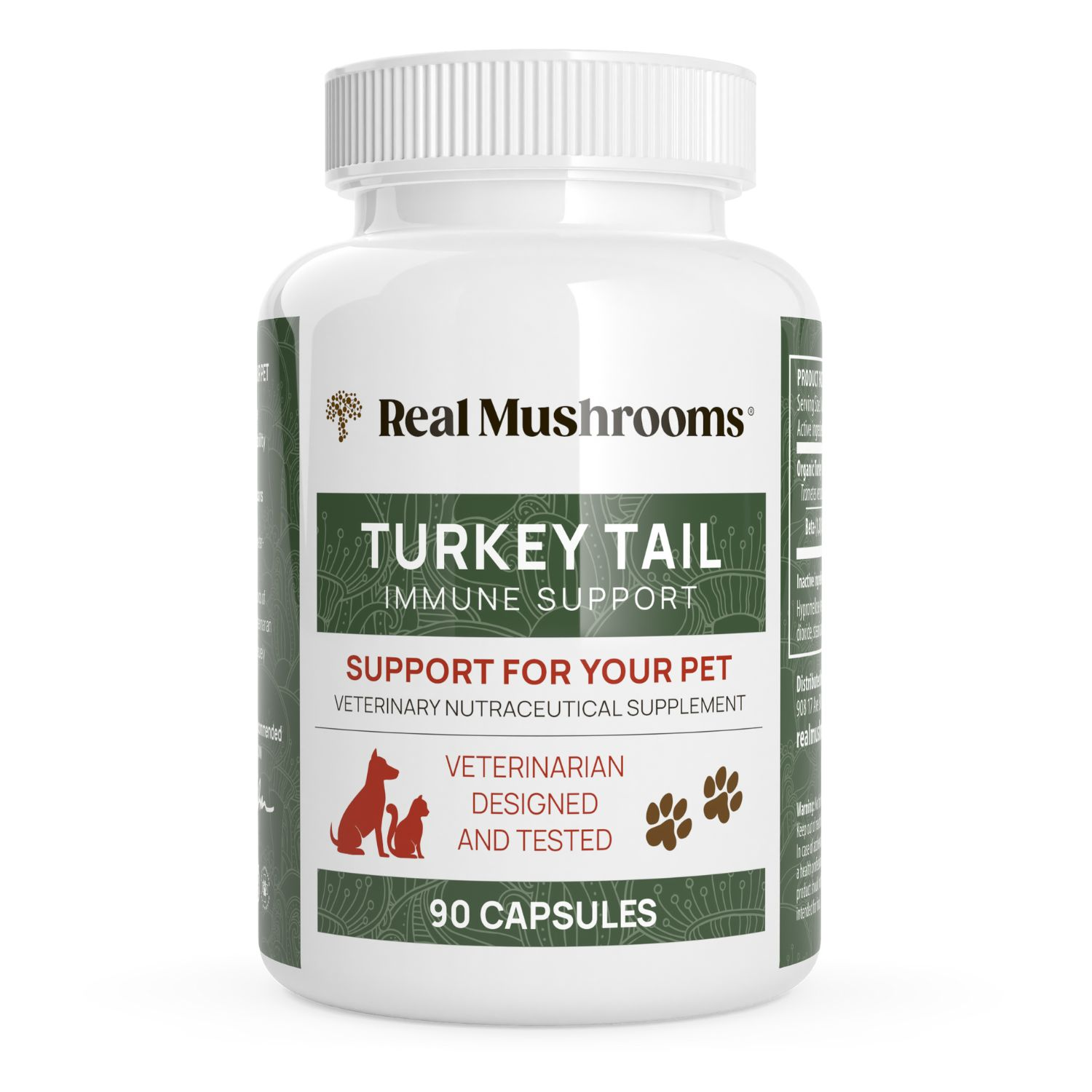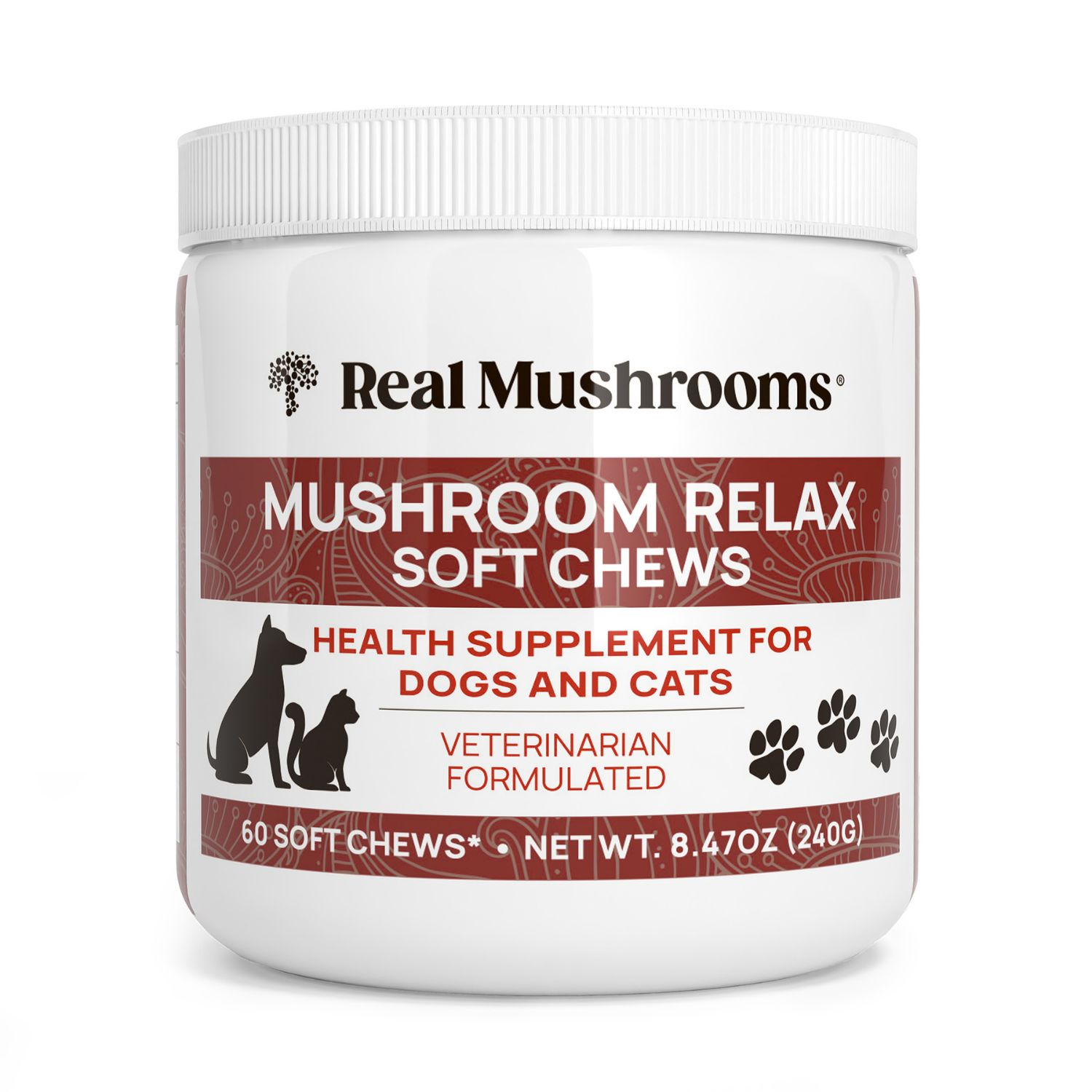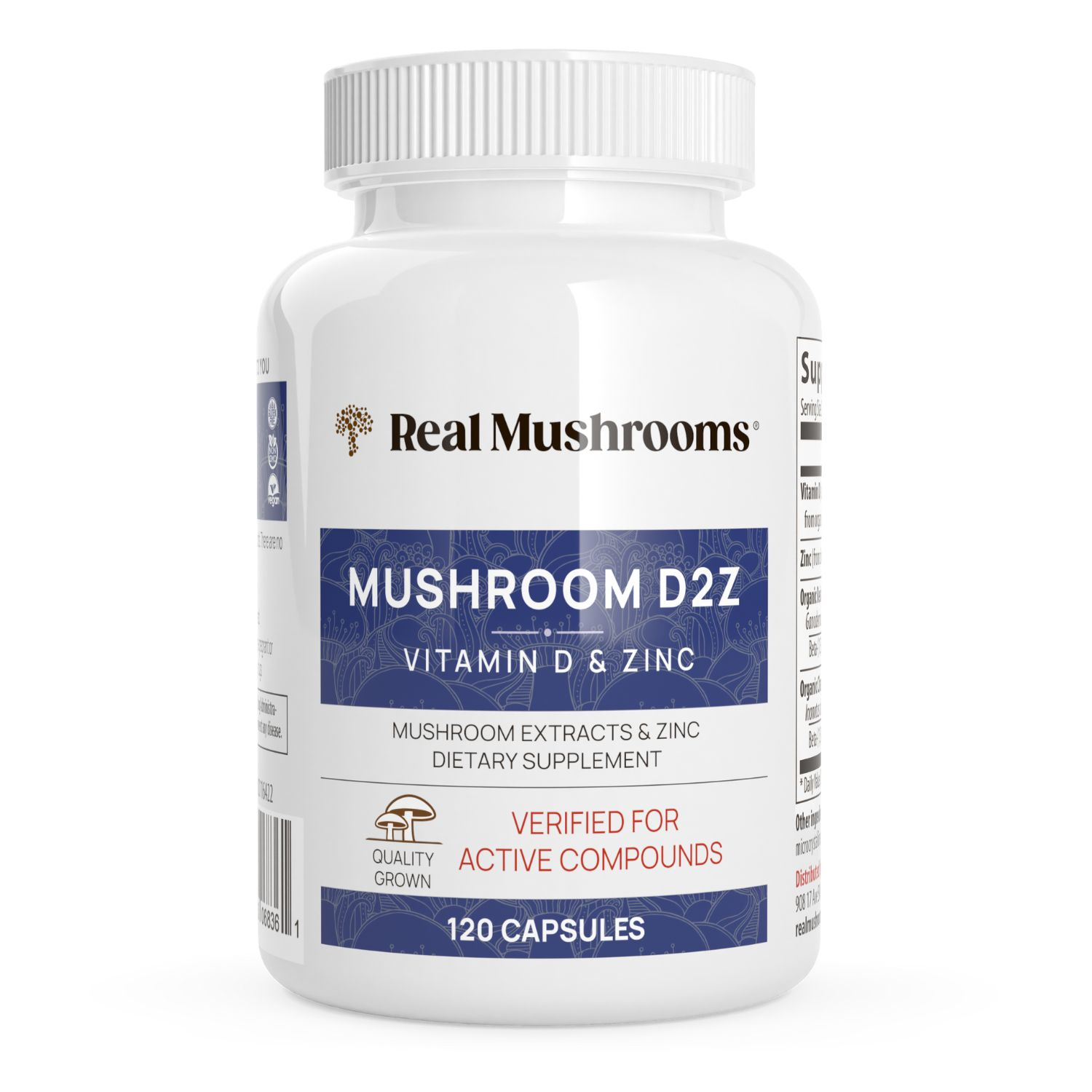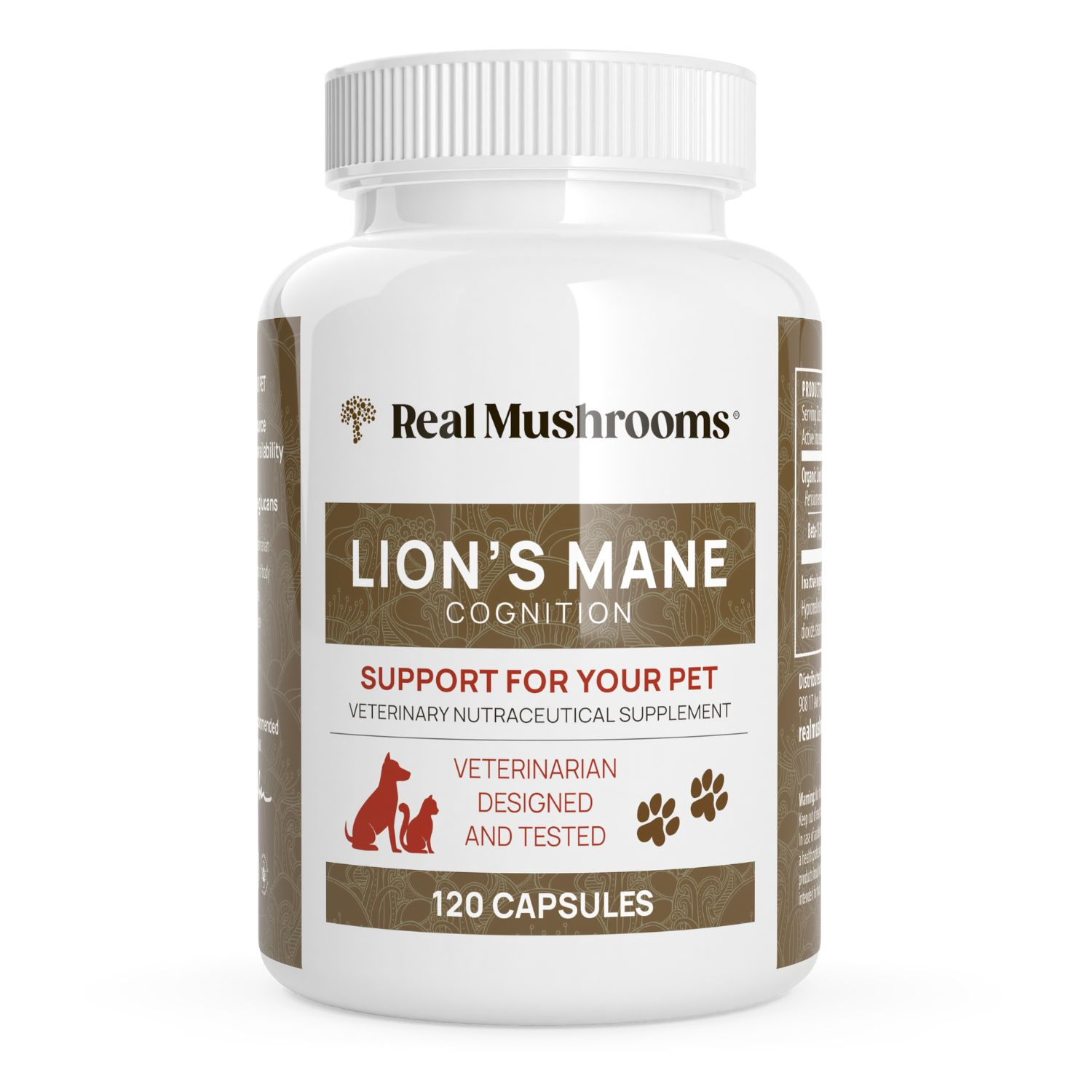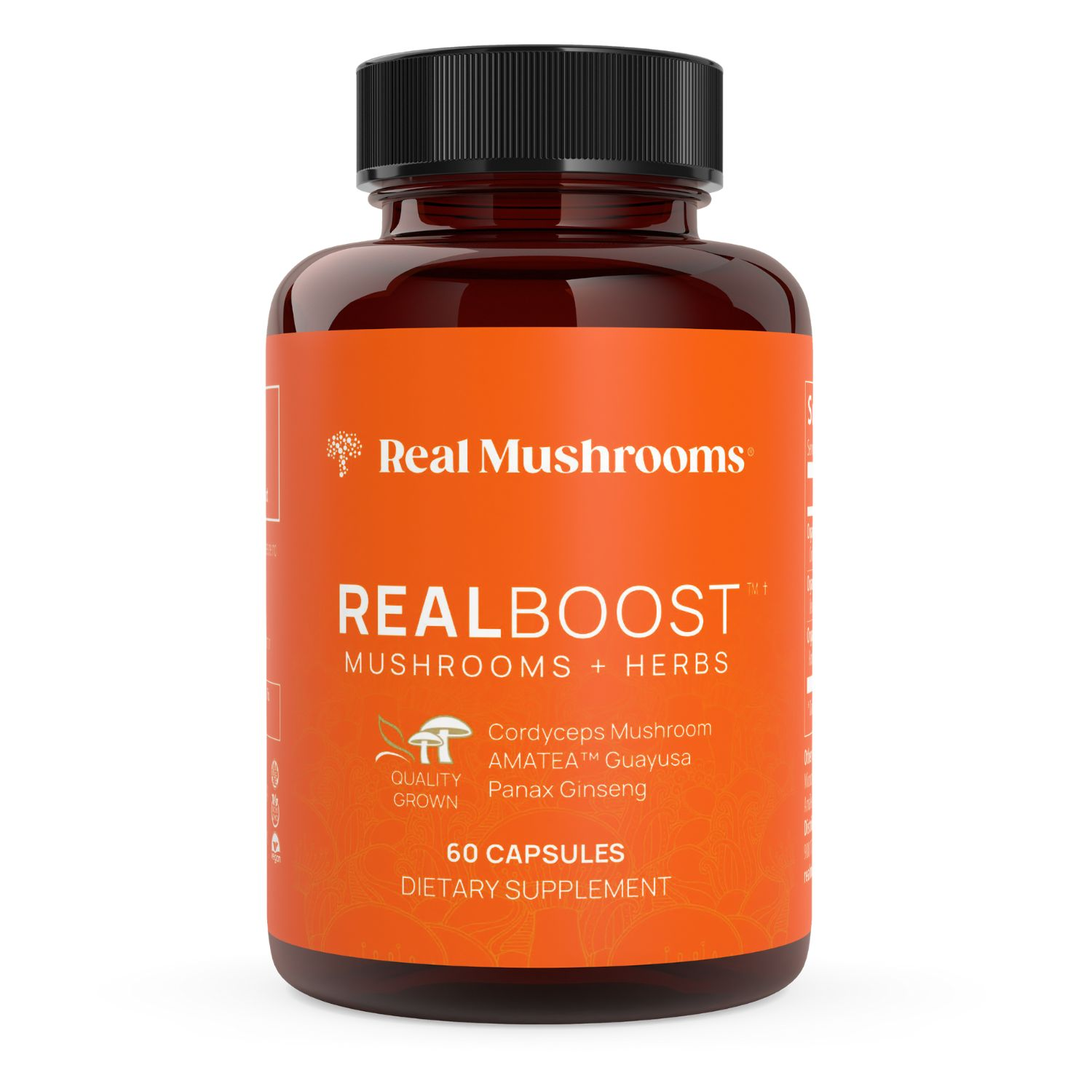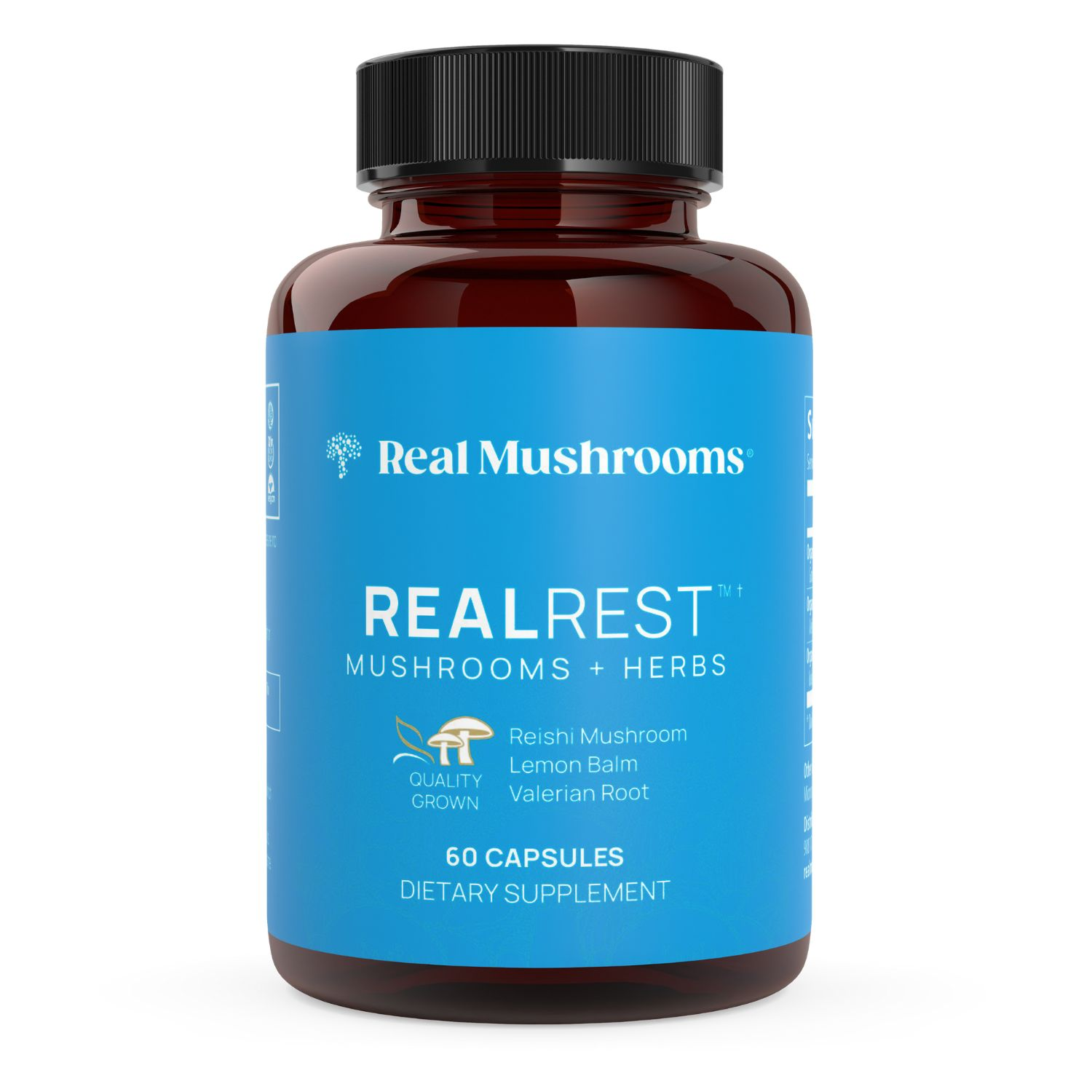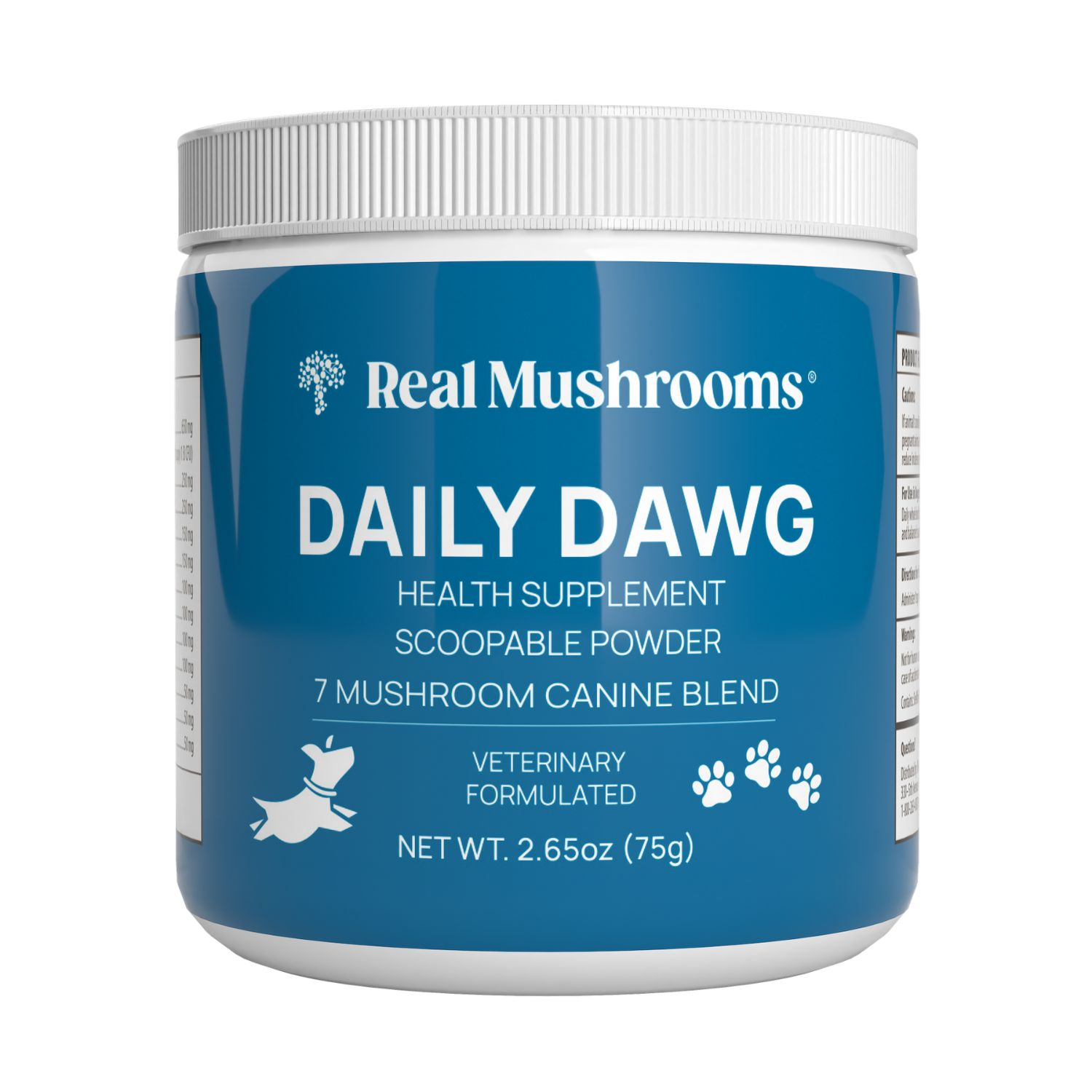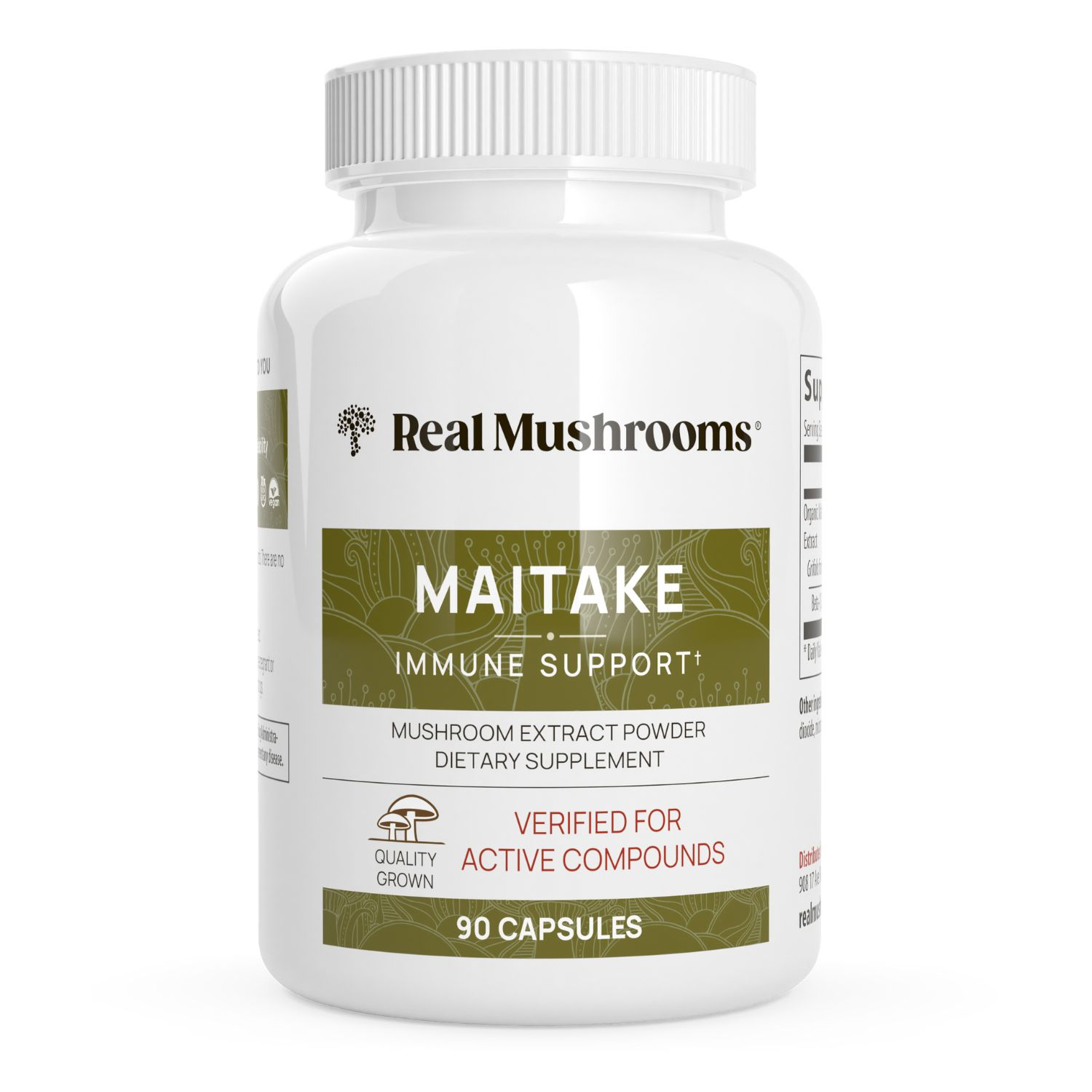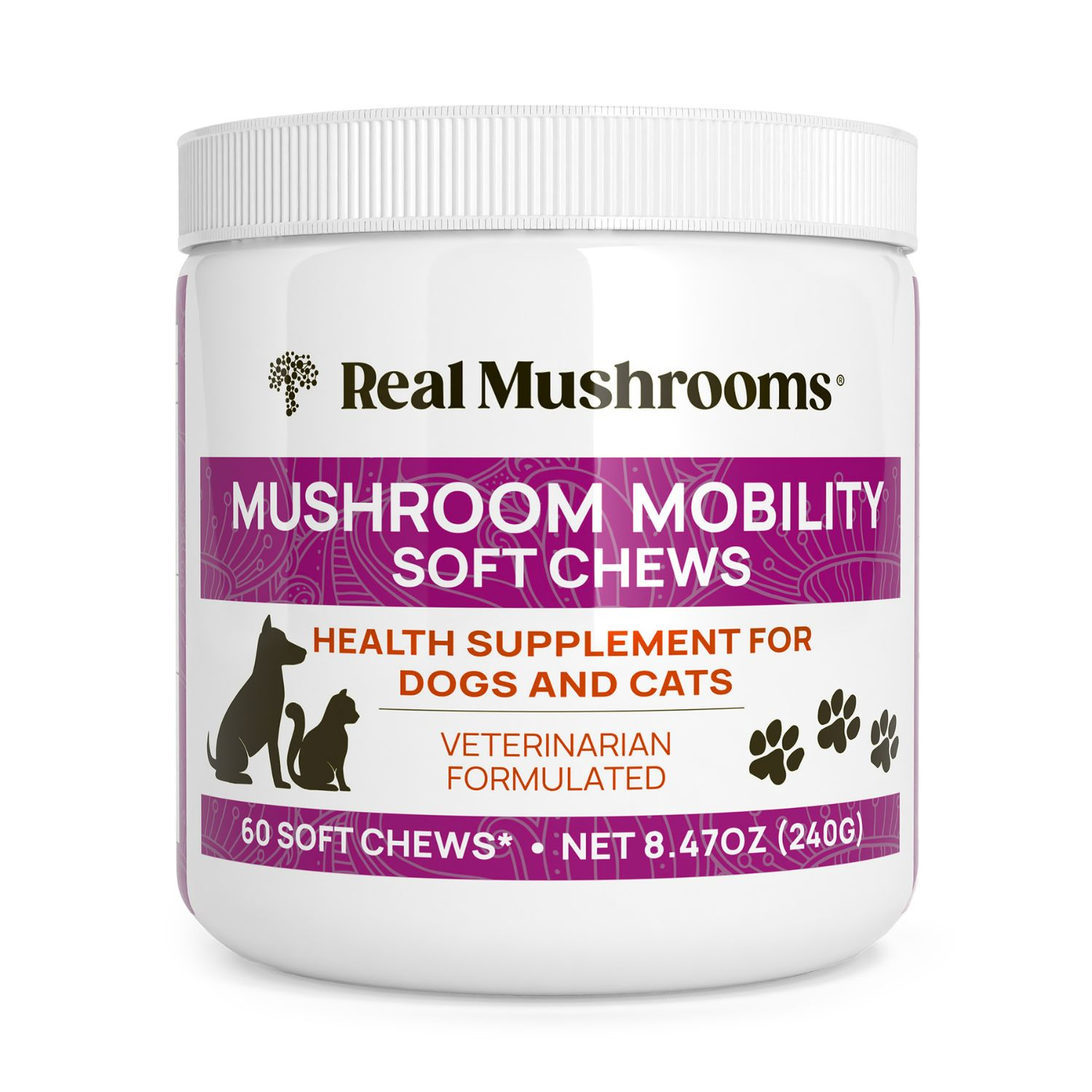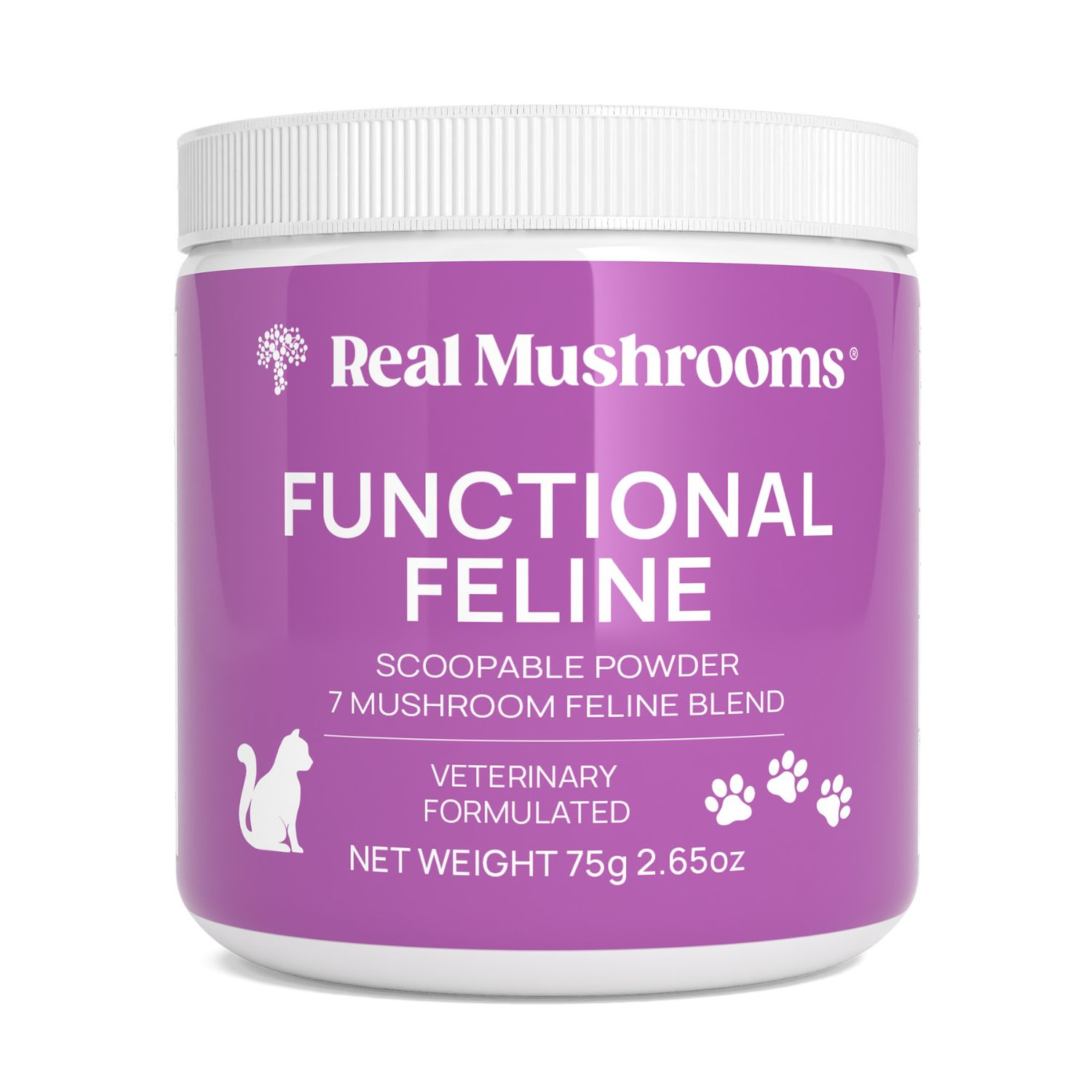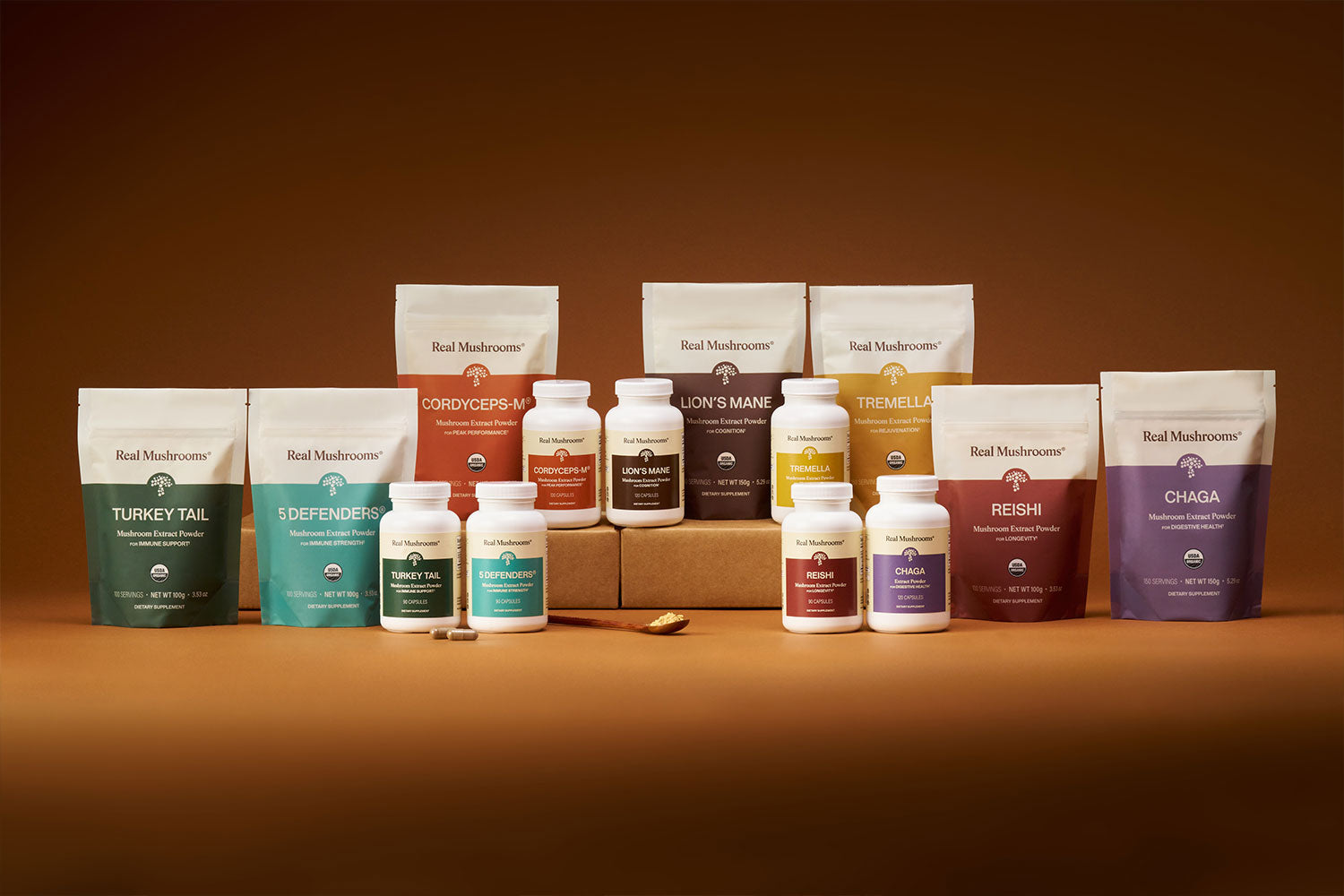Turkey Tail Mushroom Benefits & Science: A Complete Guide
21 minute read

The tremendous health-boosting potential of certain mushrooms has been recognized for decades. These “functional mushrooms,” as they are known, have been used by traditional medicine practitioners since at least 3,000 BCE to address a variety of health concerns.
The health advantages of turkey tail mushrooms are well documented in the historical and modern scientific literature. This article will explore why turkey tail mushrooms seem to be in a league of their own among other functional mushrooms such as reishi, lion’s mane, and cordyceps.

In this guide, we’ll take a deep dive into turkey tail mushroom’s various health advantages and how it supports the immune system in particular.
In This Article:
- What Are Functional Mushrooms?
- What Are Turkey Tail Mushrooms?
- The Science of Turkey Tail Mushroom Health Benefits: Two Key Compounds
- Turkey Tail Mushroom Health Benefits
- Why & How to Take Turkey Tail Mushroom (The Right Way!)
- How to Take Turkey Tail Extract
- Turkey Tail Mushroom Safety and Side Effects
- Turkey Tail Mushroom Health Advantages: The Takeaway
What are Functional Mushrooms?
“Functional mushrooms” are edible mushrooms that contain a wide variety of bioactive compounds. Each type of functional mushroom has its unique bioactive profile and capacity for supporting particular bodily systems. In the case of turkey tail mushrooms, it has a unique ability to strengthen the actions of the immune system, among other benefits.
If you’ve ever heard of functional mushrooms, you’ve also likely come across the term beta-glucans or beta-D-glucans. These polysaccharides are responsible for the immune-modulating effects of mushrooms.
They have been shown to activate immune cells like monocytes, natural killer (NK) cells, neutrophils, macrophages, and dendritic cells in test tube studies (6).
Turkey tail mushrooms have beta-D-glucans in abundance. They also contain additional bio-compounds that are responsible for some of their other unique health-supporting properties, as we will discuss in this article.
What are Turkey Tail Mushrooms?
Turkey tail, also known by its scientific names Trametes versicolor, Coriolus versicolor, or Polyporus versicolor, gets its name from its appearance: flat, fan-shaped, multicolored rings of the mushroom that look much like—you guessed it—a turkey’s tail.
Similarly, you may hear the mushroom referred to by its Chinese name, Yún Zhī (云芝), which translates to “cloud fungus,” or its Japanese name, Kawaratake “mushroom by the riverbank.”
T.versicolor is a common fungal species of the basidiomycetes class, found growing on logs, stumps, or dead trunks of deciduous trees (e.g., oak or birch) and some conifers (e.g., fir and pine trees) in North America, Asia, and Europe.
Like many others in its class, the turkey tail is a white-rot fungus. These fungi play an important role in breaking down lignin in rotting wood, leaving behind whitish, soft, spongy cellulose. This action helps return nutrients to the soil, where other plants may access them for their growth.

The Science of Turkey Tail Mushroom Benefits: Two Key Compounds
Turkey tail possesses an impressive range of primary and secondary compounds. The secondary compounds are lesser-known health-boosting components such as phenolic acids, flavonoids, and terpenoids.
Researchers identified 38 different phenolic compounds, including quercetin and baicalein. Quercitin and baicalein are two phenolic compounds found in other natural plants and herbs with an incredible amount of research and value behind them.
Turkey tail is well known for its protein-bound polysaccharides, also known as polysaccharopeptides (PSPs). There are naturally occurring protein-bound polysaccharides in turkey tail mushrooms and there are two commercially isolated protein-bound polysaccharides available from turkey tail mushrooms: PSP and PSK.
PSK is also known as polysaccharide-K, polysaccharide-Kureha, or krestin. Both PSP and PSK have a molar mass of approximately 100 kDa and have been shown to stimulate the immune system in both preclinical and clinical studies (7).
PSK
A popular anecdote suggests that PSK was first discovered by a chemical engineer working for Kureha Chemical Industry Co. The engineer observed a neighbor turn his health around by drinking tea made from turkey tail mushrooms. Intrigued, he convinced his employer to investigate the healing powers of the mushroom.
The rest is history. PSK was isolated from the CM-101 strain of the turkey tail mushroom in 1971 and was commercialized by Kureha Chemicals. In 1977, the Japanese Ministry of Health approved PSK for clinical use.
It has since been extensively studied for its role in supporting immune system health in a variety of situations, but primarily in oncology (8, 9, 10, 11, 12, 13, 14).
PSP
In the 1980s, Chinese scientists started testing many strains of T. versicolor and eventually selected the COV-1 strain as their base. PSP was extracted from this strain by Professor Qing-yao Yang, and the Chinese government approved it for use in clinical settings in 1987.
So far, over 45 independent PSP-related preclinical and clinical studies have been conducted. Furthermore, the China State Food and Drug Administration has also approved 13 types of products based on the turkey tail mushroom (7).
Both PSK and PSP belong to a group of substances called biological response modifiers (BRMs). As non-specific immunosupportive agents, they work to restore balance to the immune system without a specific target (15).
Given that over 120 strains of turkey tail mushrooms are known to exist, not all PSPs are the same, as it is just a general term for protein-bound polysaccharides (1).
The molecular weight and structure of PSPs can differ depending on the strain, growing conditions, and extraction technique (1).
Turkey Tail Mushroom Health Benefits
Traditional medicine practitioners, particularly those in Asia, have used turkey tail for millennia. According to the entry for Yún Zhī in the Bencao Gangmu (Compendium of Materia Medica) by Li ShiZhen, the fungus provided health and long-life benefits if consumed regularly.
A few of the traditional uses for turkey tail include: removing toxins, increasing energy, removing excessive fluid, strengthening the organs responsible for the immune system, and supporting liver, lung, and spleen function (1).
Some conditions that benefit from turkey tail use include coughs, breathing difficulties, hemorrhoids, and joint pain.
In conventional medicine, turkey tail has been used to support the immune systems of people with weakened immunity (2). Research conducted in vitro suggests turkey tail has strong antioxidant properties and may protect DNA from free radical damage (1).
Continue reading for an overview of the most common modern applications for this healthy mushroom.
Overview of Turkey Tail Mushroom Benefits:
- Adaptogenic Properties
- Supports the Immune System
- Supports a Healthy Inflammation Response
- Protects DNA from Damage
- Supports Gut Health
- Supports Liver Health
- Improves Athletic Performance
- May Support Blood Sugar Balance
- Benefits for Pets
Turkey Tail are Adaptogenic Mushrooms
It’s no surprise that stress levels are higher than ever. The New York Times reported in 2019 that 55% of American adults experience occasional stress.
The real kicker? Bouts of stress can negatively affect many of our body’s systems. This means that there is no better time for a functional mushroom renaissance.
Like other functional mushrooms, turkey tail mushrooms are adaptogens. As their name suggests, adaptogens help the body adapt to the various types of stressors we may come across. This includes physical, biological, or chemical stressors.
Adaptogens interact with the hypothalamic-pituitary-adrenal (HPA) axis to help stabilize your cortisol levels under stress and assist the body in reaching balance again.
Turkey Tail Supports the Immune System
Bioactive compounds in functional mushrooms can have potent immunostimulatory effects. Turkey tail extract enhances both the innate and adaptive immune responses, the body’s first and second lines of defense, respectively.
We are all born with the innate response, also called a non-specific immune response. This type consists of chemical, physical, and cellular defenses.
Adaptive immunity is acquired and specific. This type of defense allows for the expansion of certain types of white blood cells, the T and B lymphocytes.
Preclinical studies show that polysaccharides from turkey tail can induce proliferation of both T and B cells (18,19,20). These findings suggest that turkey tail supplementation is a safe way to heighten the immune response in people with weakened immunity (29).
Functional mushrooms may also enhance a third immune system known as trained innate immunity, an emerging concept in immunology (56).
Turkey's tail combined with Reishi, another functional mushroom, shows even greater possibilities for helping the immune system (57).
Turkey Tail Supports a Healthy Inflammation Response
Reactive oxygen species (ROS) include free radicals and other by-products of cellular metabolisms, such as superoxide anion (O2•-), hydrogen peroxide (H2O2), and hydroxyl radical (•OH). They are also produced in the cellular response to exposure to foreign substances, like ozone, cigarette smoking, air pollutants, and industrial chemicals.
Reactive oxygen species are critical cell signaling mediators of normal biological processes. There is a delicate balance between ROS and antioxidants that protect cells. A disturbance to this balance can lead to excessive amounts of ROS. This phenomenon is called oxidative stress.
Research shows that avoiding oxidative stress and supporting a healthy inflammation response are two of the most important things you can do to maintain a healthy body, especially as you age.
Some scientists believe turkey tail’s effect on inflammatory responses can even help protect the brain as it ages. When used in conjunction with a Ginkgo biloba extract, mice with mild memory problems associated with aging had elevated levels of antioxidant enzymes superoxide dismutase (SOD) and catalase (CAT) in their brains.
Their brain tissue also had lower expression levels of certain inflammatory markers (17).
Turkey Tail Protects DNA from Damage
Free radicals can also be harmful to your DNA, which is more sensitive to their damaging effects than other macromolecules.
Results of one study suggest that extracts from T. versicolor may have activities that can protect DNA, possibly due to the high levels of phenolic compounds in the mushroom. The underlying mechanisms of these effects are not yet clear (1).
Turkey Tail Supports Gut Health
It is increasingly being understood that our overall health is highly dependent on our gut health. The composition of the gut microbiota affects everything from digestion to cognitive function.
Beta-glucans contain bonds that human digestive enzymes cannot break down. Large indigestible glycans also cannot cross the lining of the gut, so they must remain there until they are either used or excreted (33).
This means that beta-glucans may be a potential source of prebiotics, which may contribute to changes in the health and composition of the gut microbiome (33,34).
Polysaccharides in turkey tails may also positively alter fecal microbiota composition. Researchers saw that polysaccharide peptide (PSP) elevated the beneficial Bifidobacterium and Lactobacillus species while reducing potentially harmful ones. PSP also lowered the pH of the fecal microbiota, a finding that suggests a mechanism by which PSP could protect against unwanted invaders (33).
In a randomized, open-label clinical trial, subjects in the PSP group had clear and consistent changes in their intestinal microbiome composition. These findings again demonstrate the prebiotic potential of PSP (35).
Additionally, the immunomodulating properties and prebiotic activity of PSPs may also have a weight management effect, though human studies have not been done to test that theory (36,37).
Turkey Tail Supports Liver Health
The antioxidant activities of turkey tail extract may also help support liver health. Some chemicals and their toxic metabolites may be harmful to the liver.
Animal studies investigating liver impact commonly use the hepatotoxin carbon tetrachloride (CCl4). This toxin produces ROS and a free radical called trichloromethyl (CCl3-), which are both bad news for the liver (38).
Results from animal studies suggest that PSP could help protect the liver against CCl3- by regulating the immune response to the free radical, such as increasing levels of the protective antioxidants SOD, glutathione peroxidase (GSH-Px), and glutathione (GSH) (39).
Researchers identified one polysaccharide peptide (PSP) in the turkey tail, called PSP-1b1, that had hepatoprotective effects in mice (40). Results from another study showed that mice that consumed PSP had lower levels of liver enzymes, indicating enhanced liver health (41).
However, more data will be needed to conclude if PSP could have similar effects in humans.
Turkey Tail Improves Athletic Performance
Many researchers are turning to natural health products to find potential ways to help decrease sports fatigue and improve athletic ability.
Improvements in sports fatigue might not be the first thing that comes to mind when thinking about functional mushrooms. However, animal studies have found that turkey tail polysaccharide peptide (PSP) may enhance pain thresholds and have anti-fatigue activity (2,43).
In one study, mice fed turkey tail extracts had greater forelimb grip strength and higher exercise tolerance than those that were not (43).
Blood lactate supplies most of the energy for short, high-intensity exercise. It is measured with ammonia to help interpret an athlete’s resistance to fatigue.
Turkey tail mushroom extract may help lower blood lactate and ammonia levels after exercise, as suggested by the above study's findings. This effect demonstrates that turkey tail extracts could help delay the onset of fatigue (43).
Athletic Boost: Learn how other functional mushrooms can enhance athletic performance by reading our detailed article.
Turkey Tail May Support Blood Sugar Balance
Healthy blood sugar regulation is key to achieving optimal health. All cells run on glucose (or blood sugar). When there is insufficient sugar in the blood, cells don’t get the energy they need. When there is excess sugar, blood vessels are negatively affected.
Two hormones help ensure blood sugar levels stay within a narrow range: Insulin which lowers blood sugar by escorting it out of the blood and to the cells. Glucagon raises blood sugar by prompting the liver to convert stored glycogen into glucose.
To achieve glucose homeostasis, it is important to maintain the body’s sensitivity to insulin.
Animal studies show that PSPs may do just that. They have been shown to support normal insulin sensitivity, which helps maintain blood glucose levels already within a healthy range (44,45,46).
These results need to be replicated in clinical trials; however, these initial results in animals are very promising!

Turkey Tail Benefits for Pets
Humans aren’t the only ones who can benefit from turkey tail. This mushroom is one of the most popular immune boosters for the furry members of your family as well.
Pet Health Insight: Explore how your pet can benefit from turkey tail mushrooms by checking out our article on functional mushrooms for pets.

Drawing Conclusions About Turkey Tail Mushroom Benefits: A Caveat
While the insights obtained from the animal studies quoted in the sections above may be promising, results from animal and laboratory studies don’t always translate well to humans. Also, not all strains of T. versicolor are the same.
More studies will need to be conducted to confirm the potential benefits of turkey tails for a variety of health concerns.
Why & How to Take Turkey Tail Mushroom (the Right Way!)
In Japanese and traditional Chinese medicine, turkey tail mushrooms were prepared as tea. That option is still available for those who can find and identify wild turkey tails. For the rest of us, we can look for turkey tail extracts in powder or capsule form.
However, not all turkey tail supplements and mushroom extracts are made the same.
To reap the health advantages of turkey tail extract, you must select quality turkey tail supplements. There are three important supplement-buying guidelines to consider.
Most importantly, look for a product whose label indicates that only the turkey tail mushroom is used and not the mycelium. Mycelium is essentially the root structure of the fungi.
Not only does it contain fewer of the desirable bio-compounds, but it is grown on grain. That grain is intertwined with the mycelium and ends up in the supplement.
The grain the mycelium grows on dilutes the potency of the end product and loads it with unnecessary starch and filler.
Guide Available: Check out our guide to buying the best turkey tail supplement to help you choose a product that will deliver the concentrated bio-compounds responsible for the health benefits you seek.

How to Take Turkey Tail Mushroom
Real Mushrooms cares deeply about sourcing the highest quality mushrooms. Our turkey tail extracts only contain the mushrooms (fruiting body). Accredited third-party laboratories test all our products for active compounds, including beta-D-glucans.
Our turkey tail extracts contain over 30% beta-D-glucans. There is no mycelium, added starch, or grain of any kind. The recommended dosage for adults is ½ teaspoons per day as a dietary supplement.
If you’re looking for a quick and easy way to reap the benefits of turkey tail mushrooms, there is no better way than our extract capsules. A maintenance dose is just two turkey tail capsules a day.
As always, please consult your healthcare provider to make sure turkey tail is the right supplement for you.
It’s easy to add turkey’s tail to your daily routine. This mushroom has a very mild, earthy flavor, which makes it a great immune-boosting addition to your morning coffee.

Here are some fun recipes you can try that include turkey tail powder:
- Paleo Butternut Squash Soup with Medicinal Mushroom Extract
- Acai Bowl Recipe with Immune-Boosting Mushrooms
- Anti-Inflammatory Mushroom Elixir
- Turkey Tail Immune Boosting Smoothie Bowl

Turkey Tail Mushroom Safety and Side Effects
Turkey tail mushrooms are generally well tolerated, with most people experiencing no adverse effects. However, some individuals have reported mild symptoms, such as:
- Gastrointestinal upset (e.g., gas, bloating)
- Heartburn
- Heart palpitation
- Chest pain
- Nausea
- Loss of appetite
- Dark-colored stools
- Constipation
- Cold- or flu-like symptoms
Another reported side effect is the darkening of fingernails (54). Many of these toxicities were reported when turkey tail was used with other standard therapies for abnormal cellular growths (55).
Clinical studies so far do not support a specific dosage. Participants of a pilot clinical trial reported no serious adverse events while taking up to nine grams of turkey tail per day. Mild adverse events included heartburn, heart palpitation, constipation, chest pain, fever, radiation dermatitis, and cold- or flu-like symptoms (29).
A meta-analysis was done using turkey tail and another functional mushroom while undergoing conventional cancer treatment only mentioned one study out of 23 had a serious adverse event.
In fact, 7 of the 23 research studies found a decrease in adverse events when using these functional mushrooms alongside conventional therapies, such as chemotherapy, surgery, or radiation (60).
Pregnant and breastfeeding women, as well as individuals with underlying health conditions including mushroom allergy, should consult a healthcare practitioner before they consume turkey tail mushrooms.
Turkey Tail Mushroom Benefits: The Takeaways
As you can see, turkey tail is one powerhouse of a mushroom. From our discussion above, it’s clear why this mushroom has been a respected and valuable remedy for thousands of years. Researchers will only continue to discover how turkey tails can support the immune system.
In our modern lifestyles, we have more stressors than ever before. But adding a turkey tail supplement to your daily routine doesn’t have to be one of them.
When purchasing turkey tail mushrooms, be sure it adheres to the recommendations we discussed above to help ensure you get the benefits you are looking for.

More Articles About Turkey Tail and Its Benefits
References
- Knežević, A., Živković, L., Stajić, M., Vukojević, J., Milovanović, I. & Spremo-Potparević, B. 2015, “Antigenotoxic Effect of Trametes spp. Extracts against DNA Damage on Human Peripheral White Blood Cells,” The Scientific World Journal, <https://www.hindawi.com/journals/tswj/2015/146378/>.
- Cui, J. & Chisti, Y. 2003, “Polysaccharopeptides of Coriolus versicolor: physiological activity, uses, and production,” Biotechnology Advances, vol. 21, no. 2, pp. 109–122, <https://www.sciencedirect.com/science/article/abs/pii/S0734975003000028>
- Kim, H.S., Hong, J.T., Kim, Y. & Han, S.-B. 2011, “Stimulatory Effect of β-glucans on Immune Cells,” Immune Network, vol. 11, no. 4, p. 191. <https://www.ncbi.nlm.nih.gov/pmc/articles/PMC3202617/>
- Dou, H., Chang, Y. & Zhang, L. 2019, “Chapter Fifteen - Coriolus versicolor polysaccharopeptide as an immunotherapeutic in China,” L. Zhang (ed.),ScienceDirect, Academic Press, <https://www.sciencedirect.com/science/article/pii/S1877117319300353?via%3Dihub#bb0050>
- Ohno, R., Yamada, K., Masaoka, T., Ohshima, T., Amaki, I., Hirota, Y., Horikoshi, N., Horiuchi, A., Imai, K. & Kimura, I. 1984, “A randomized trial of chemoimmunotherapy of acute nonlymphocytic leukemia in adults using a protein-bound polysaccharide preparation,” Cancer immunology, immunotherapy: CII, vol. 18, no. 3, pp. 149–154, <https://pubmed.ncbi.nlm.nih.gov/6391658/>
- Harada, M., Matsunaga, K., Oguchi, Y., Iijima, H., Ito, O., Tamada, K., Kimura, G. & Nomoto, K. 1995, “The involvement of transforming growth factor beta in the impaired antitumor T-cell response at the gut-associated lymphoid tissue (GALT),” Cancer Research, vol. 55, no. 24, pp. 6146–6151, <https://pubmed.ncbi.nlm.nih.gov/8521406/>
- Harada, M., Matsunaga, K., Oguchi, Y., Iijima, H., Tamada, K., Abe, K., Takenoyama, M., Ito, O., Kimura, G. & Nomoto, K. 1997, “Oral administration of PSK can improve the impaired anti-tumor CD4+ T-cell response in gut-associated lymphoid tissue (GALT) of specific-pathogen-free mice,” International Journal of Cancer, vol. 70, no. 3, pp. 362–372, <https://pubmed.ncbi.nlm.nih.gov/9033641/>
- Hayakawa, K., Mitsuhashi, N., Saito, Y., Nakayama, Y., Furuta, M., Nakamoto, S., Kawashima, M. & Niibe, H. 1997, “Effect of Krestin as adjuvant treatment following radical radiotherapy in non-small cell lung cancer patients,” Cancer Detection and Prevention, vol. 21, no. 1, pp. 71–77, <https://pubmed.ncbi.nlm.nih.gov/9043766/>
- Nakazato, H., Koike, A., Saji, S., Ogawa, N. & Sakamoto, J. 1994, “Efficacy of immunochemotherapy as adjuvant treatment after curative resection of gastric cancer. Study Group of Immunochemotherapy with PSK for Gastric Cancer,” Lancet (London, England), vol. 343, no. 8906, pp. 1122–1126, <https://pubmed.ncbi.nlm.nih.gov/7910230/>
- Sakamoto, J., Morita, S., Oba, K., Matsui, T., Kobayashi, M., Nakazato, H., Ohashi, Y. & Meta-Analysis Group of the Japanese Society for Cancer of the Colon Rectum 2006, “Efficacy of adjuvant immunochemotherapy with polysaccharide K for patients with curatively resected colorectal cancer: a meta-analysis of centrally randomized controlled clinical trials,” Cancer immunology, immunotherapy: CII, vol. 55, no. 4, pp. 404–411, <https://pubmed.ncbi.nlm.nih.gov/16133112/>
- Yamashita, K., Sakuramoto, S., Mieno, H., Nemoto, M., Shibata, T., Katada, N., Ohtsuki, S., Sakamoto, Y., Hoshi, K., Wang, G., Hemmi, O., Satoh, T., Kikuchi, S. & Watanabe, M. 2015, “Preoperative administration of polysaccharide Kureha and reduced plasma transforming growth factor-β in patients with advanced gastric cancer: A randomized clinical trial,” Molecular and Clinical Oncology, vol. 3, no. 3, pp. 471–478, <https://www.ncbi.nlm.nih.gov/pmc/articles/PMC4471616/>
- Trovato, A., Pennisi, M., Crupi, R., Paola, R.D., Alario, A., Modafferi, S., Rosa, G.D., Fernandes, T., Signorile, A., Maiolino, L. & Calabrese, S.C. and V. 2017, “Neuroinflammation and Mitochondrial Dysfunction in the Pathogenesis of Alzheimer’s Disease: Modulation by Coriolus versicolor (Yun-Zhi) Nutritional Mushroom,” Journal of Neurology & Neuromedicine, vol. 2, no. 1, <https://www.jneurology.com/articles/pneuroinflammation-and-mitochondrial-dysfunction-in-the-pathogenesis-of-alzheimerrsquos-disease-modulation-by-coriolus-versicolor-.html>
- Volk, T. 2000, “Tom Volk’s Fungus of the Month for November 2000,” Tom Volk’s Fungi, <https://botit.botany.wisc.edu/toms_fungi/nov2000.html>.
- Fang, X., Jiang, Y., Ji, H., Zhao, L., Xiao, W., Wang, Z. & Ding, G. 2015, “The Synergistic Beneficial Effects of Ginkgo Flavonoid and Coriolus versicolor Polysaccharide for Memory Improvements in a Mouse Model of Dementia,” Evidence-based Complementary and Alternative Medicine : eCAM, vol. 2015, <https://www.ncbi.nlm.nih.gov/pmc/articles/PMC4364004/>
- Ho, C.Y., Lau, C.B.S., Kim, C.F., Leung, K.N., Fung, K.P., Tse, T.F., Chan, H.H.L. & Chow, M.S.S. 2004, “Differential effect of Coriolus versicolor (Yunzhi) extract on cytokine production by murine lymphocytes in vitro,” International Immunopharmacology, vol. 4, no. 12, pp. 1549–1557, <https://www.sciencedirect.com/science/article/pii/S1567576904002474>
- Ng, T.B. 1998, “A review of research on the protein-bound polysaccharide (polysaccharopeptide, PSP) from the mushroom Coriolus versicolor (basidiomycetes: Polyporaceae),” General Pharmacology: The Vascular System, vol. 30, no. 1, pp. 1–4, <https://www.sciencedirect.com/science/article/pii/S0306362397000761>
- Yang, S., Zhuang, T., Si, Y., Qi, K. & Zhao, J. 2015, “Coriolus versicolor mushroom polysaccharides exert immunoregulatory effects on mouse B cells via membrane Ig and TLR-4 to activate the MAPK and NF-κB signaling pathways,” Molecular Immunology, vol. 64, no. 1, pp. 144–151, <https://www.sciencedirect.com/science/article/pii/S0161589014003150?via%3Dihub#bib0095>
- Lee, C.-L., Sit, W.-H., Jiang, P.-P., So, I.W.-Y. & Wan, J.M.-F. 2008, “Polysaccharopeptide mimics ciclosporin-mediated Th1/Th2 cytokine balance for suppression of activated human T cell proliferation by MAPKp38 and STAT5 pathways,” Journal of Pharmacy and Pharmacology, vol. 60, no. 11, pp. 1491–9 <https://onlinelibrary.wiley.com/doi/abs/10.1211/jpp.60.11.0010>
- Go, P. & Chung, C.H. 1989, “Adjuvant PSK immunotherapy in patients with carcinoma of the nasopharynx,” The Journal of International Medical Research, vol. 17, no. 2, pp. 141–149, <https://pubmed.ncbi.nlm.nih.gov/2656331/>
- Nishiwaki, Y., Furuse, K., Fukuoka, M., Ota, M., Niitani, H., Asakawa, M., Nakai, H., Sakai, S. & Ogawa, N. 1990, “[A randomized controlled study of PSK combined immuno-chemotherapy for adenocarcinoma of the lung. The Advanced Lung Cancer Immuno-chemotherapy Study Group],” Gan to Kagaku Ryoho. Cancer & Chemotherapy, vol. 17, no. 1, pp. 131–136, <https://pubmed.ncbi.nlm.nih.gov/2404455/>
- Eliza, W.L.Y., Fai, C.K. & Chung, L.P. 2012, “Efficacy of Yun Zhi (Coriolus versicolor) on survival in cancer patients: systematic review and meta-analysis,” Recent Patents on Inflammation & Allergy Drug Discovery, vol. 6, no. 1, pp. 78–87, <https://pubmed.ncbi.nlm.nih.gov/22185453/>
- Brown, D.C. & Reetz, J. 2012, “Single Agent Polysaccharopeptide Delays Metastases and Improves Survival in Naturally Occurring Hemangiosarcoma,” Evidence-based Complementary and Alternative Medicine : eCAM, vol. 2012, <https://www.ncbi.nlm.nih.gov/pmc/articles/PMC3440946/>
- Sourav, P. & Girdhari, L. 2017, “The Molecular Mechanism of Natural Killer Cells Function and Its Importance in Cancer Immunotherapy,” Frontiers in Immunology, vol. 8, p. 1124, <https://www.frontiersin.org/articles/10.3389/fimmu.2017.01124/full>
- Yamazaki, H., Yoshioka, Y., Inoue, Takehiro, Tanaka, E., Nishikubo, M., Sato, T., Ishida, T., Nakamura, H. & Inoue, Toshihiko 2002, “Changes in natural killer cell activity by external radiotherapy and/or brachytherapy,” Oncology Reports, vol. 9, no. 2, pp. 359–363, <https://pubmed.ncbi.nlm.nih.gov/11836608/>
- Torkelson, C.J., Sweet, E., Martzen, M.R., Sasagawa, M., Wenner, C.A., Gay, J., Putiri, A. & Standish, L.J. 2012, “Phase 1 Clinical Trial of Trametes versicolor in Women with Breast Cancer,” ISRN oncology, vol. 2012, p. 251632, <https://www.ncbi.nlm.nih.gov/pmc/articles/PMC3369477/>
- Chay, W.Y., Tham, C.K., Toh, H.C., Lim, H.Y., Tan, C.K., Lim, C., Wang, W.-W. & Choo, S.-P. 2017, “Coriolus versicolor (Yunzhi) Use as Therapy in Advanced Hepatocellular Carcinoma Patients with Poor Liver Function or Who Are Unfit for Standard Therapy,” The Journal of Alternative and Complementary Medicine, vol. 23, no. 8, pp. 648–52, <https://www.liebertpub.com/doi/10.1089/acm.2016.0136>
- Ma, Y., Wu, X., Yu, J., Zhu, J., Pen, X. & Meng, X. 2017, “Can polysaccharide K improve therapeutic efficacy and safety in gastrointestinal cancer? a systematic review and network meta-analysis,” Oncotarget, vol. 8, no. 51, <https://www.ncbi.nlm.nih.gov/pmc/articles/PMC5687673/>
- American Heart Association 2016, “About Metabolic Syndrome,” www.heart.org, <https://www.heart.org/en/health-topics/metabolic-syndrome/about-metabolic-syndrome>
- Yu, Z.-T., Liu, B., Mukherjee, P. & Newburg, D. 2013, “Trametes versicolor Extract Modifies Human Fecal Microbiota Composition In vitro,” Plant Foods for Human Nutrition, vol. 68, pp. 107–12, <https://link.springer.com/article/10.1007/s11130-013-0342-4>
- Aida, F.M.N.A., Shuhaimi, M., Yazid, M. & Maaruf, A.G. 2009, “Mushroom as a potential source of prebiotics: a review,” Trends in Food Science & Technology, vol. 20, no. 11, pp. 567–575, <https://www.sciencedirect.com/science/article/pii/S0924224409002295>
- Pallav, K., Dowd, S.E., Villafuerte, J., Yang, X., Kabbani, T., Hansen, J., Dennis, M., Leffler, D.A., Newburg, D.S. & Kelly, C.P. 2014, “Effects of polysaccharopeptide from Trametes Versicolor and amoxicillin on the gut microbiome of healthy volunteers,” Gut Microbes, vol. 5, no. 4, pp. 458–67, <https://www.tandfonline.com/doi/full/10.4161/gmic.29558>
- Friedman, M. 2016, “Mushroom Polysaccharides: Chemistry and Antiobesity, Antidiabetes, Anticancer, and Antibiotic Properties in Cells, Rodents, and Humans,” Foods, vol. 5, no. 4, p. 80, <https://www.ncbi.nlm.nih.gov/pmc/articles/PMC5302426/>
- Li, X., Chen, P., Zhang, P., Chang, Y., Cui, M. & Duan, J. 2019, “Protein‐Bound β‐glucan from Coriolus versicolor has Potential for Use Against Obesity,” Molecular Nutrition & Food Research, vol. 63, no. 7, p. 1801231, <https://onlinelibrary.wiley.com/doi/full/10.1002/mnfr.201801231>
- Abdel-Moneim, A.M., Al-Kahtani, M.A., El-Kersh, M.A. & Al-Omair, M.A. 2015, “Free Radical-Scavenging, Anti-Inflammatory/Anti-Fibrotic and Hepatoprotective Actions of Taurine and Silymarin against CCl4 Induced Rat Liver Damage,” M.A. Avila (ed.), PLOS ONE, vol. 10, no. 12, p. e0144509, <https://journals.plos.org/plosone/article?id=10.1371/journal.pone.0144509>
- Chang, Y., Zhang, M., Jiang, Y., Liu, Y., Luo, H., Hao, C., Zeng, P. & Zhang, L. 2017, “Preclinical and Clinical Studies of Coriolus versicolor Polysaccharopeptide as an Immunotherapeutic in China,” Discovery Medicine, vol. 23, no. 127, pp. 207–219, <https://www.discoverymedicine.com/Yajing-Chang-2/2017/04/coriolus-versicolor-polysaccharopeptide-as-an-immunotherapeutic-in-china/>
- Wang, K.-L., Lu, Z.-M., Mao, X., Chen, L., Gong, J.-S., Ren, Y., Geng, Y., Li, H., Xu, H.-Y., Xu, G.-H., Shi, J.-S. & Xu, Z.-H. 2019, “Structural characterization and anti-alcoholic liver injury activity of a polysaccharide from Coriolus versicolor mycelia,” International Journal of Biological Macromolecules, vol. 137, pp. 1102–1111, <https://www.sciencedirect.com/science/article/abs/pii/S014181301836834X?via%3Dihub>
- Ren, Y., Geng, Y., Chen, H., Lu, Z.-M., Shi, J.-S. & Xu, Z. 2018, “Polysaccharide peptides from Coriolus versicolor: A multi-targeted approach for the protection or prevention of alcoholic liver disease,” Journal of Functional Foods, vol. 40, pp. 769–777, <https://www.sciencedirect.com/science/article/abs/pii/S1756464617307235?via%3Dihub>
- Uthayathas, S., Karuppagounder, S.S., Tamer, S.I., Parameshwaran, K., Degim, T., Suppiramaniam, V. & Dhanasekaran, M. 2007, “Evaluation of neuroprotective and anti-fatigue effects of sildenafil,” Life Sciences, vol. 81, no. 12, pp. 988–992, <https://pubmed.ncbi.nlm.nih.gov/17825848/>
- Ho, C.-S., Tung, Y.-T., Kung, W.-M., Huang, W.-C., Leung, W.-K., Huang, C.-C. & Wu, J.-H. 2017, “Effect of Coriolus versicolor Mycelia Extract on Exercise Performance and Physical Fatigue in Mice,” International Journal of Medical Sciences, vol. 14, no. 11, pp. 1110–1117, <https://www.ncbi.nlm.nih.gov/pmc/articles/PMC5666542/>
- Wu, Z., Pang, S., Chen, Xiao-xuan, Yu, Y., Zhou, J., Chen, Xi & Pang, L. 2013, “Effect of Coriolus versicolor polysaccharides on the hematological and biochemical parameters and protection against Aeromonas hydrophila in allogynogenetic crucian carp (Carassius auratus gibelio),” Fish Physiology and Biochemistry, vol. 39, no. 2, pp. 181–190, <https://pubmed.ncbi.nlm.nih.gov/22791194/>
- Yang, B.-K., Kim, G.-N., Jeong, Y.-T., Jeong, H., Mehta, P. & Song, C.-H. 2008, “Hypoglycemic Effects of Exo-biopolymers Produced by Five Different Medicinal Mushrooms in STZ-induced Diabetic Rats,” Mycobiology, vol. 36, no. 1, pp. 45–49, <https://pubmed.ncbi.nlm.nih.gov/23997607/>
- Xian, H., Che, H., Qin, Y., Yang, F., Meng, S., Li, X., Bai, Y. & Wang, L. 2017, “Coriolus versicolor aqueous extract ameliorates insulin resistance with PI3K/Akt and p38 MAPK signaling pathways involved in diabetic skeletal muscle,” Phytotherapy Research, vol. 32, no. 3, pp. 551–60, <https://onlinelibrary.wiley.com/doi/full/10.1002/ptr.6007>
- Collins, R.A. & Ng, T.B. 1997, “Polysaccharopeptide from Coriolus versicolor has potential for use against human immunodeficiency virus type 1 infection,” Life Sciences, vol. 60, no. 25, pp. PL383–7, <https://pubmed.ncbi.nlm.nih.gov/9194694/>
- Karaman, M., Jovin, E., Malbasa, R., Matavuly, M. & Popović, M. 2010, “Medicinal and edible lignicolous fungi as natural sources of antioxidative and antibacterial agents,” Phytotherapy research: PTR, vol. 24, no. 10, pp. 1473–1481, <https://pubmed.ncbi.nlm.nih.gov/20878697/>
- Donatini, B. 2014, “Control of Oral Human Papillomavirus (HPV) by Medicinal Mushrooms, Trametes versicolor and Ganoderma lucidum: A Preliminary Clinical Trial,” International Journal of Medicinal Mushrooms, vol. 16, no. 5, pp. 497–8, <https://pubmed.ncbi.nlm.nih.gov/25271984/>
- Matijašević, D., Pantić, M., Rašković, B., Pavlović, V., Duvnjak, D., Sknepnek, A. & Nikšić, M. 2016, “The Antibacterial Activity of Coriolus versicolor Methanol Extract and Its Effect on Ultrastructural Changes of Staphylococcus aureus and Salmonella Enteritidis,” Frontiers in Microbiology, vol. 7, <https://www.ncbi.nlm.nih.gov/pmc/articles/PMC4972825/>
- Kim, B.-L., Lim, K.-O., Han, S.-R., Kim, K.-H. & Oh, T.-J. 2017, “Antimicrobial activities of various extracts of Coriolus versicolor against oral bacteria,” Journal of Korean society of Dental Hygiene, vol. 17, no. 1, pp. 111–122, <https://www.koreascience.or.kr/article/JAKO201711437355415.page>
- Palacios, S., Losa, F., Dexeus, D. & Cortés, J. 2017, “Beneficial effects of a Coriolus versicolor-based vaginal gel on cervical epithelization, vaginal microbiota and vaginal health: a pilot study in asymptomatic women,” BMC Women’s Health, vol. 17, no. 1, <https://link.springer.com/article/10.1186/s12905-017-0374-2>
- McCleary, B.V. & Draga, A. 2016, “Measurement of β-Glucan in Mushrooms and Mycelial Products,” Journal of AOAC International, vol. 99, no. 2, pp. 364–373, <https://pubmed.ncbi.nlm.nih.gov/26957216/>
- Fritz, H., Kennedy, D.A., Ishii, M., Fergusson, D., Fernandes, R., Cooley, K. & Seely, D. 2015, “Polysaccharide K and Coriolus versicolor Extracts for Lung Cancer,” Integrative Cancer Therapies, vol. 14, no. 3, pp. 201–11, <https://pubmed.ncbi.nlm.nih.gov/25784670/>
- Memorial Sloan Kettering Cancer Center 2019, “Coriolus versicolor | Memorial Sloan Kettering Cancer Center,” www.mskcc.org, <https://www.mskcc.org/cancer-care/integrative-medicine/herbs/coriolus-versicolor>
- van Steenwijk, H. P., Bast, A., & de Boer, A. (2021). Immunomodulating Effects of Fungal Beta-Glucans: From Traditional Use to Medicine. Nutrients, 13(4), 1333. https://doi.org/10.3390/nu13041333
- Donatini B. (2014). Control of oral human papillomavirus (HPV) by medicinal mushrooms, Trametes versicolor and Ganoderma lucidum: a preliminary clinical trial. International journal of medicinal mushrooms, 16(5), 497–498. https://doi.org/10.1615/intjmedmushrooms.v16.i5.80
- Study details | Mushroom-based product for COVID-19 | ClinicalTrials.gov. (n.d.). https://www.clinicaltrials.gov/study/NCT04667247
- Study details | RCT of mushroom based natural product to enhance immune response to COVID-19 vaccination | ClinicalTrials.gov. (n.d.). https://clinicaltrials.gov/study/NCT04951336
- Zhong, L., Yan, P., Lam, W. C., Yao, L., & Bian, Z. (2019). Coriolus Versicolor and Ganoderma Lucidum Related Natural Products as an Adjunct Therapy for Cancers: A Systematic Review and Meta-Analysis of Randomized Controlled Trials. Frontiers in pharmacology, 10, 703. https://doi.org/10.3389/fphar.2019.00703
